
Nara, home to many early emperor palaces and free-roaming wild deer, is also known for its cherry blossoms. In this guide, we’ll take you to some of the best places in this historic city to experience the breathtaking beauty of cherry blossoms in full bloom.
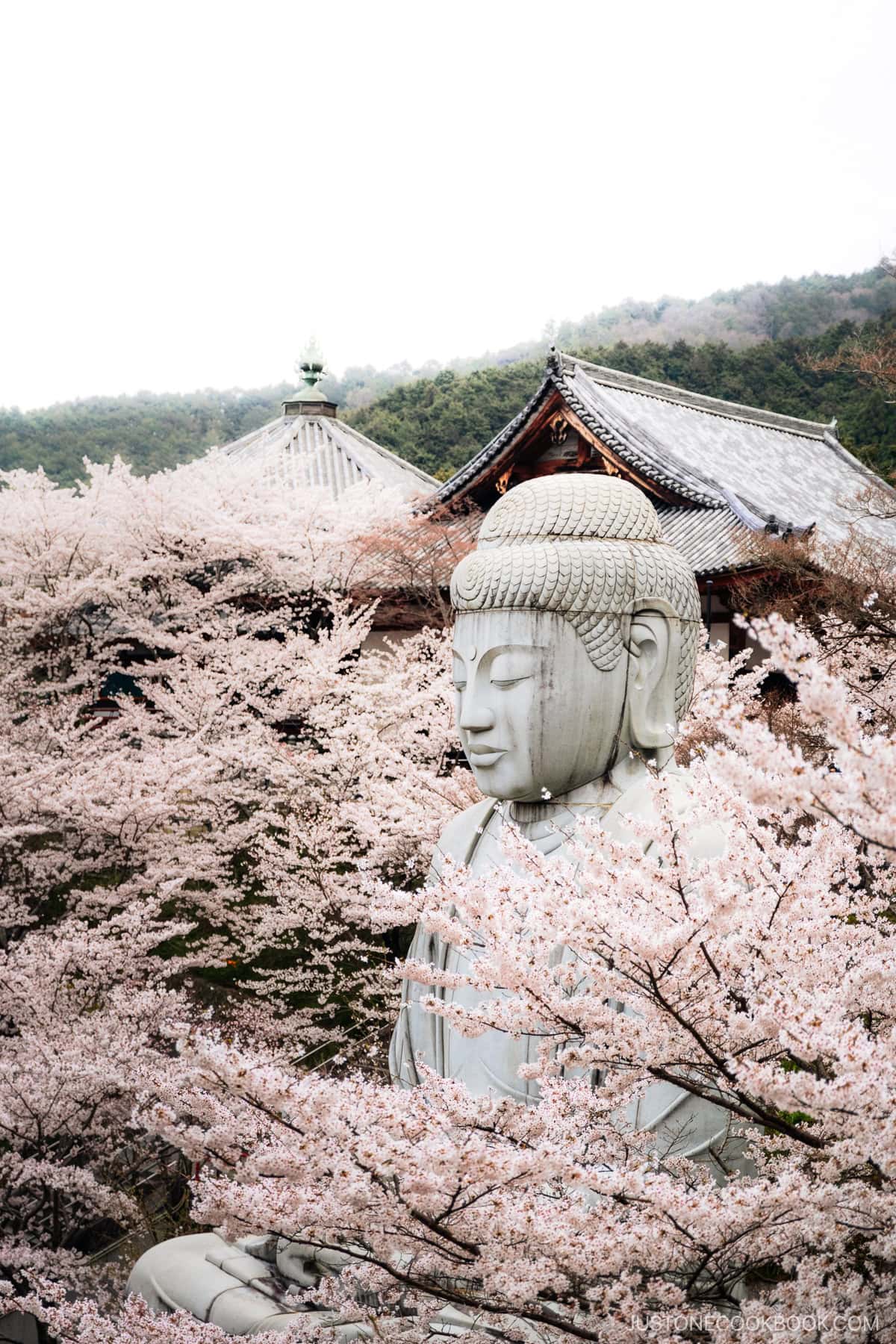
Chasing cherry blossoms can be both exciting and stressful. These ephemeral flowers sprout, bloom, and fall within just a couple of weeks. Each region blooms at different times, and the weather during this period is notoriously unpredictable, making it hard to pinpoint the perfect time to visit. Despite these challenges, the pursuit is part of the adventure and truly worthwhile.
To help you make the most of your cherry blossom visit to Japan, I’ll guide you through Nara, Kanazawa, Tokyo, and the northern region of Tohoku. In this four-part guide, I’ll introduce you to some top must-visit spots as well as some lesser-known areas that will take you off the beaten path.
We’ll start with Nara, a city with a significant historical importance, located less than one hour from Kyoto and Osaka.
Nara Park 奈良公園
Blooming Period: Late March to Early April
Photo date: April 4th, 2024
A visit to Nara isn’t complete without stopping by the famous Nara Park. The endless herds of deer, the renowned Todaiji Temple, and Kasuga Taisha Shrine are must-sees no matter how many times you’ve been. Since I won’t go into too much depth about what to do here, you can check out our complete Nara travel guide for more details.
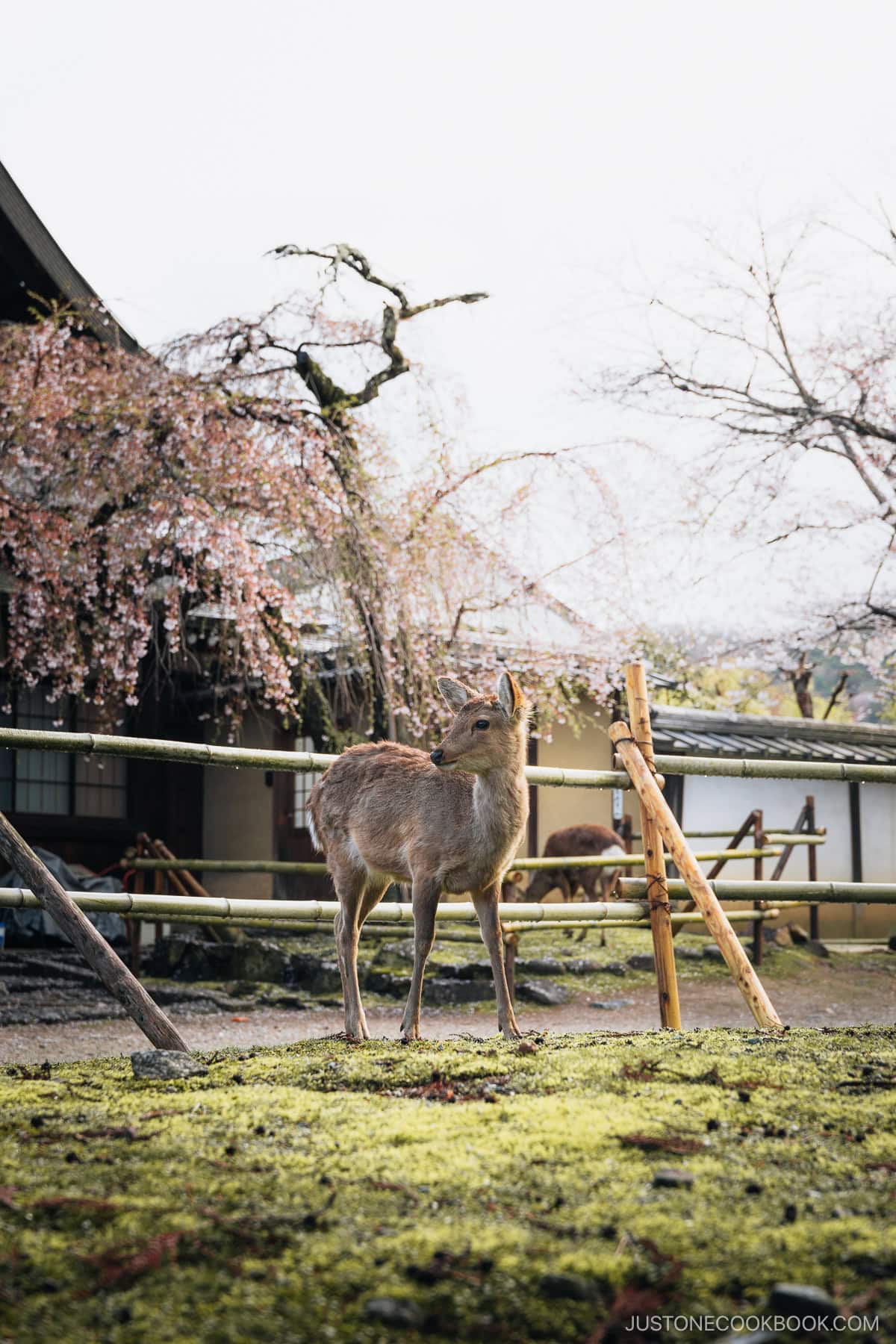
Undoubtedly, many people visit Nara to see the bowing deer. Along with the cherry blossoms scattered throughout the park, it feels otherworldly.
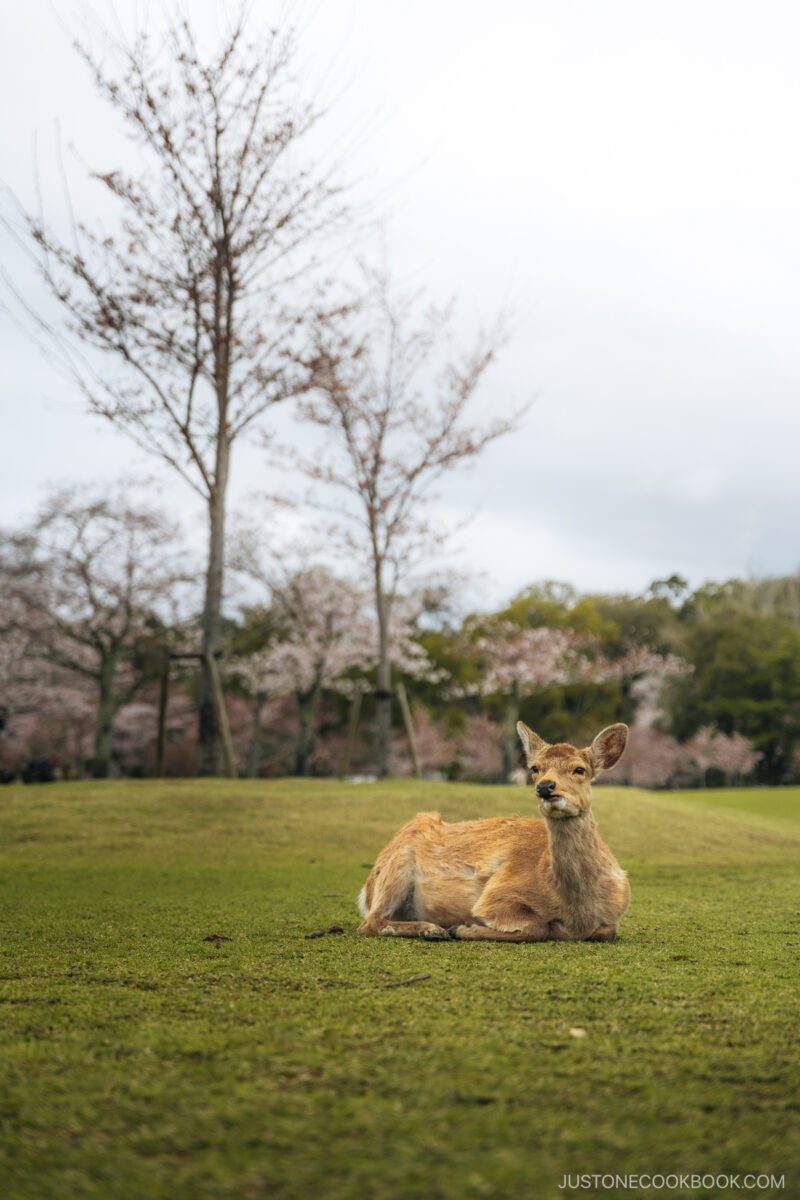

Todaiji is also flanked by cherry blossoms, which paint the revered temple with a splash of pink. To the left is a huge cherry tree, creating a picturesque scene!
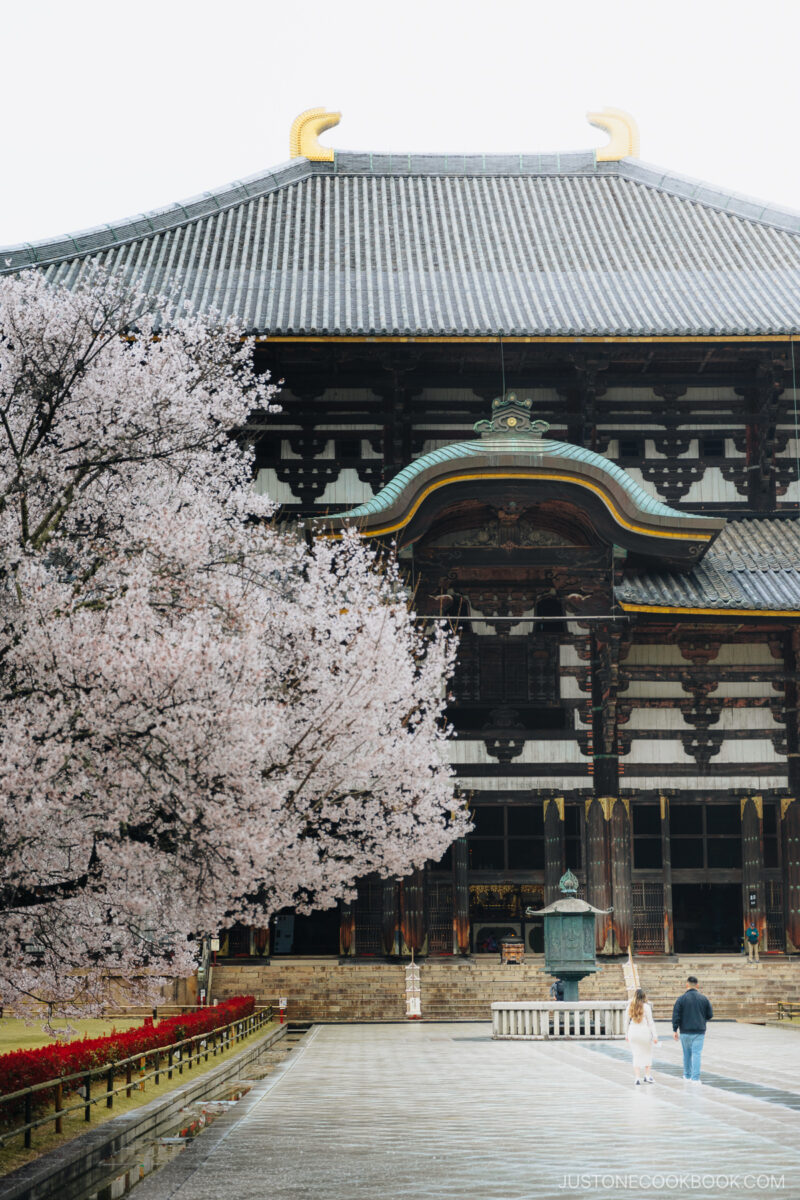

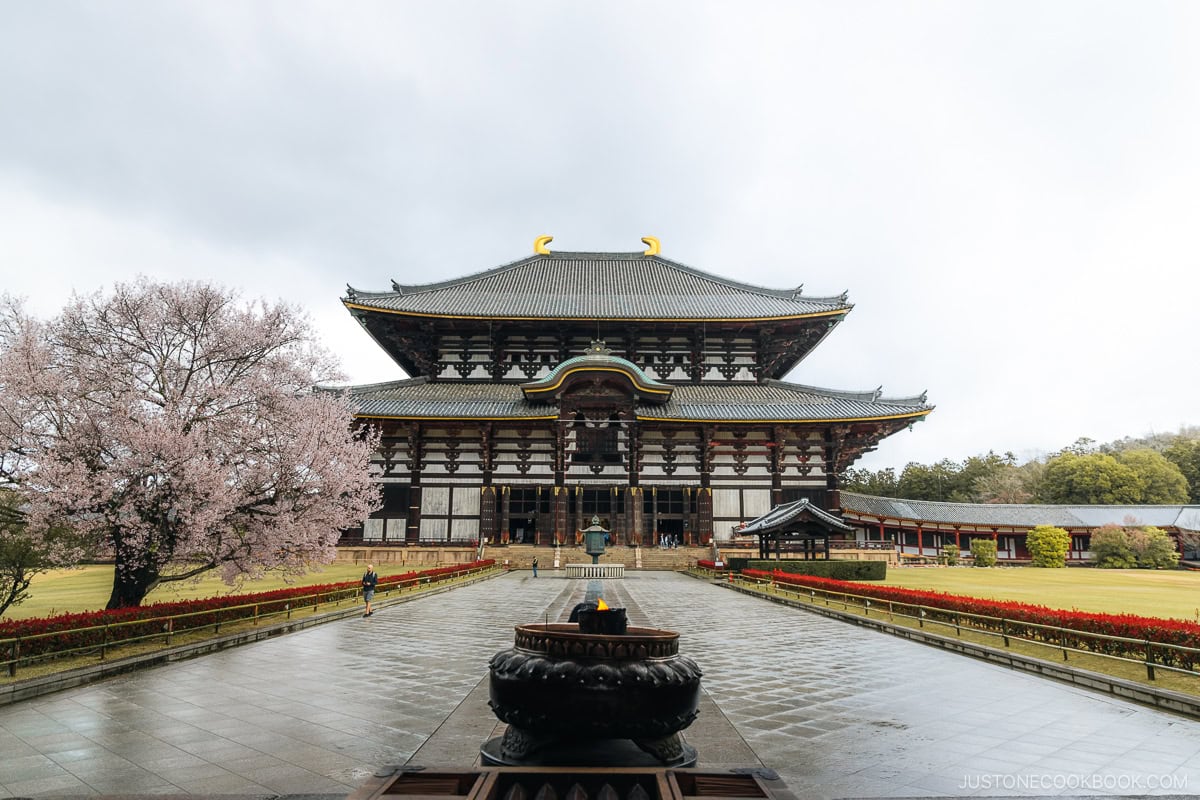
Here’s a crucial tip for your cherry blossom viewing experience: it’s better to be slightly late than early when chasing these delicate blooms. As the pink petals fall, you’ll be treated to a sakura fubuki (cherry blossom snowstorm). The petals, whisked away by the wind as they descend, create a scene straight out of a movie. It’s a truly special sight that allows you to fully appreciate the fleeting beauty of these blossoms.
Yamato-Koriyama Castle Ruins 郡山城
Blooming Period: Late March to Early April
Photo date: April 4th 2024
The historic castle is located in the southwest region of Nara City. It has been designated as part of the “Continued Top 100 Japanese Castles” and “100 Best Cherry Blossom Spots in Japan.”
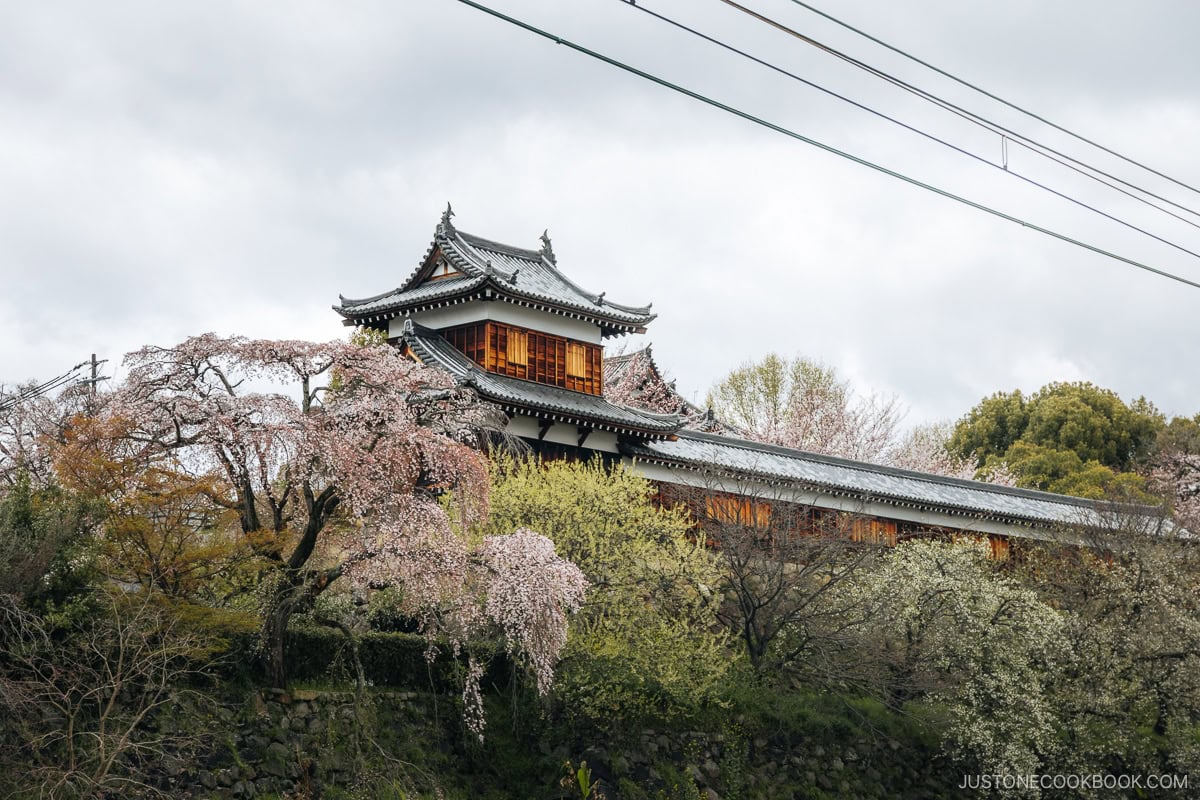
Yamato-Koriyama Castle Ruins are around a 10-minute walk from Kintetsu-Koriyama Station or a 15-minute walk from JR Koriyama Station.
When Lord Toyotomi Hidenaga (1540-1591) took over as the owner, he aimed to create a castle befitting someone with landholdings of one million goku of rice (the equivalent of enough land to produce rice to feed one million people for a year). One of the most interesting aspects of the castle is the walls that Hidenaga built. It is said that there were not enough stones to complete his vision, so he decided to source stones from temples, unfinished Buddhist art, and even a Jizo statue.
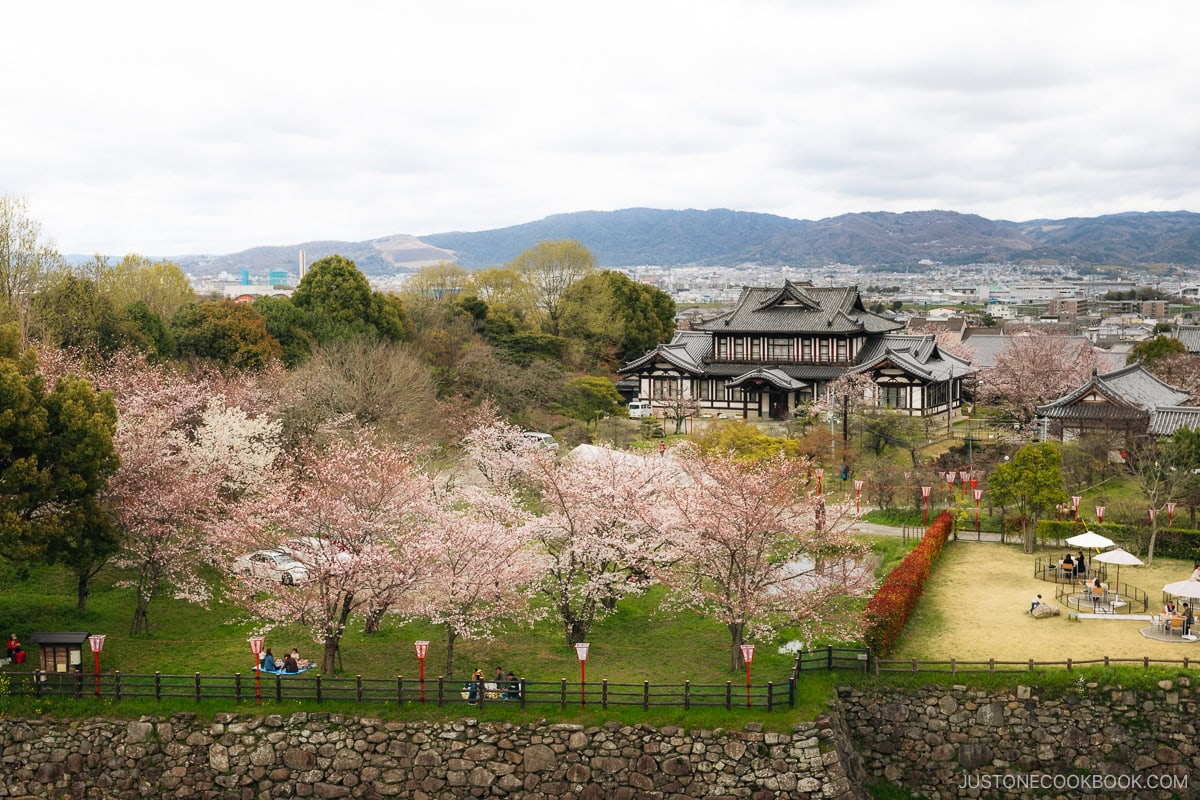
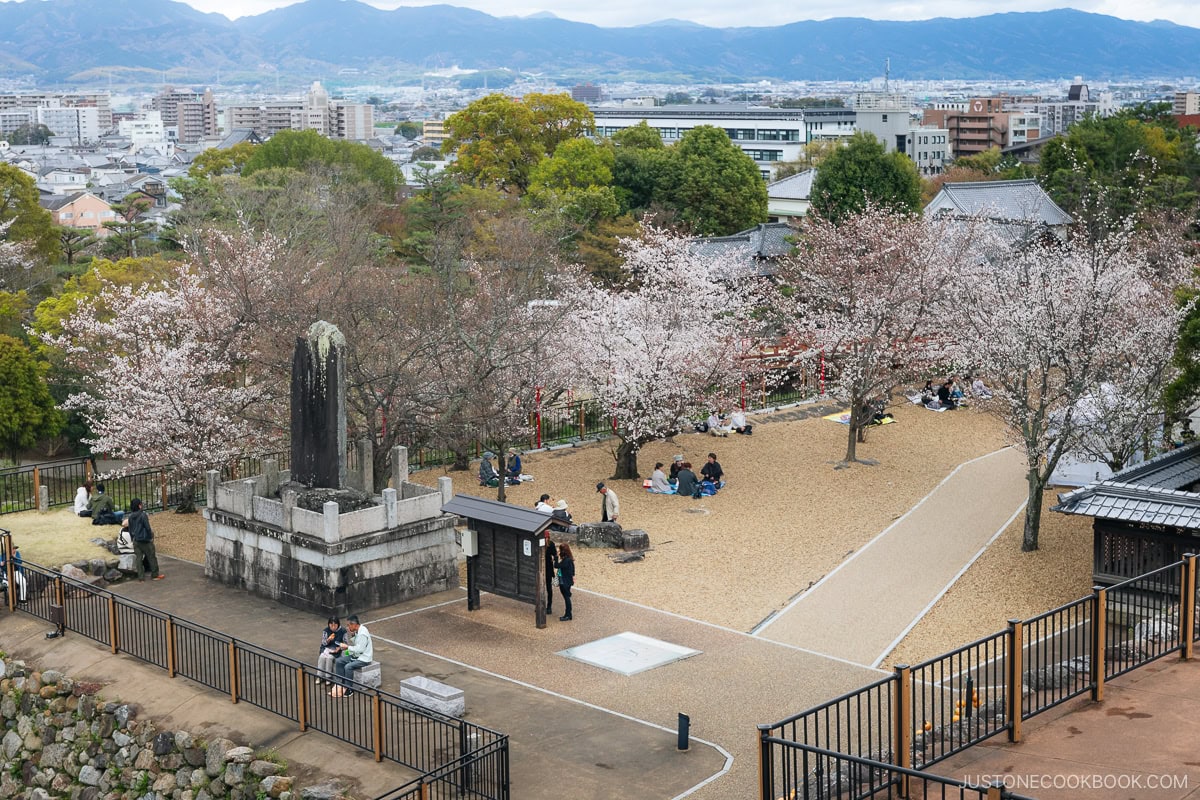
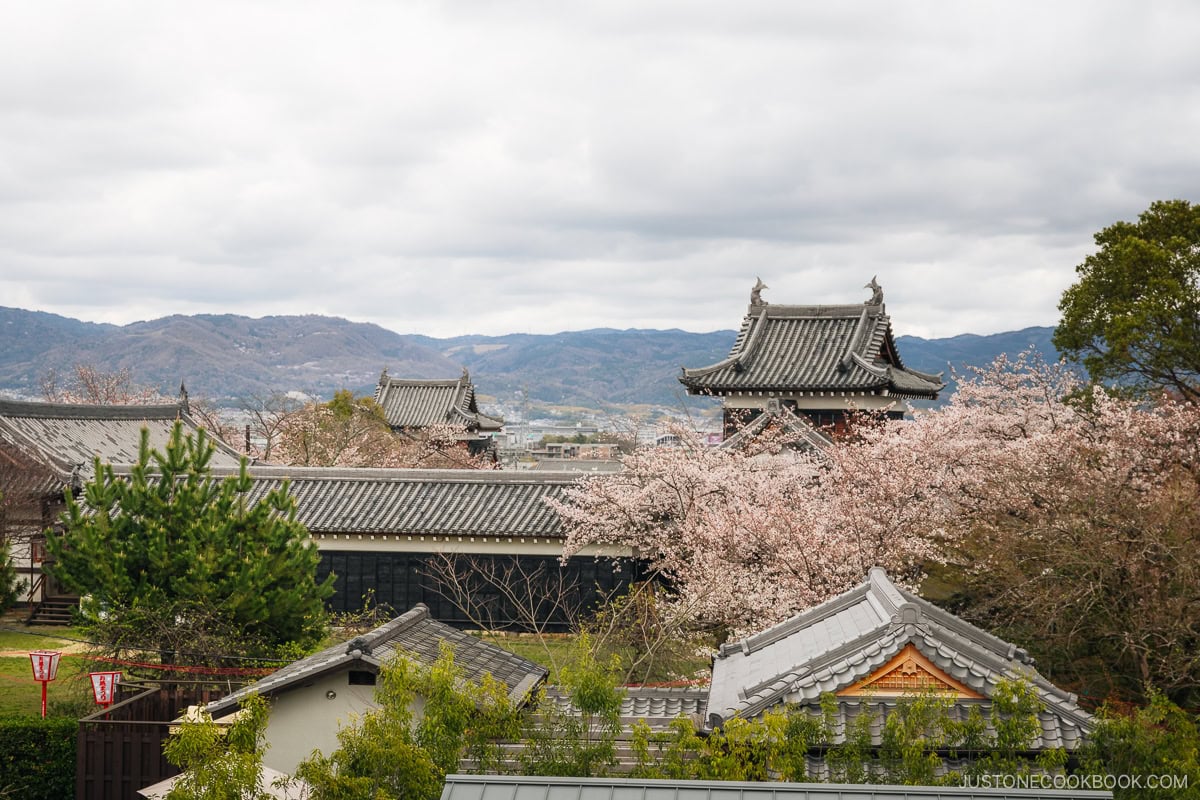
When I visited, there was a special cherry blossom festival. At the castle’s entrance, there was a line of food stalls offering classics such as yakisoba, okonomiyaki, and takoyaki. You could bring the food inside the castle grounds and have your own picnic!
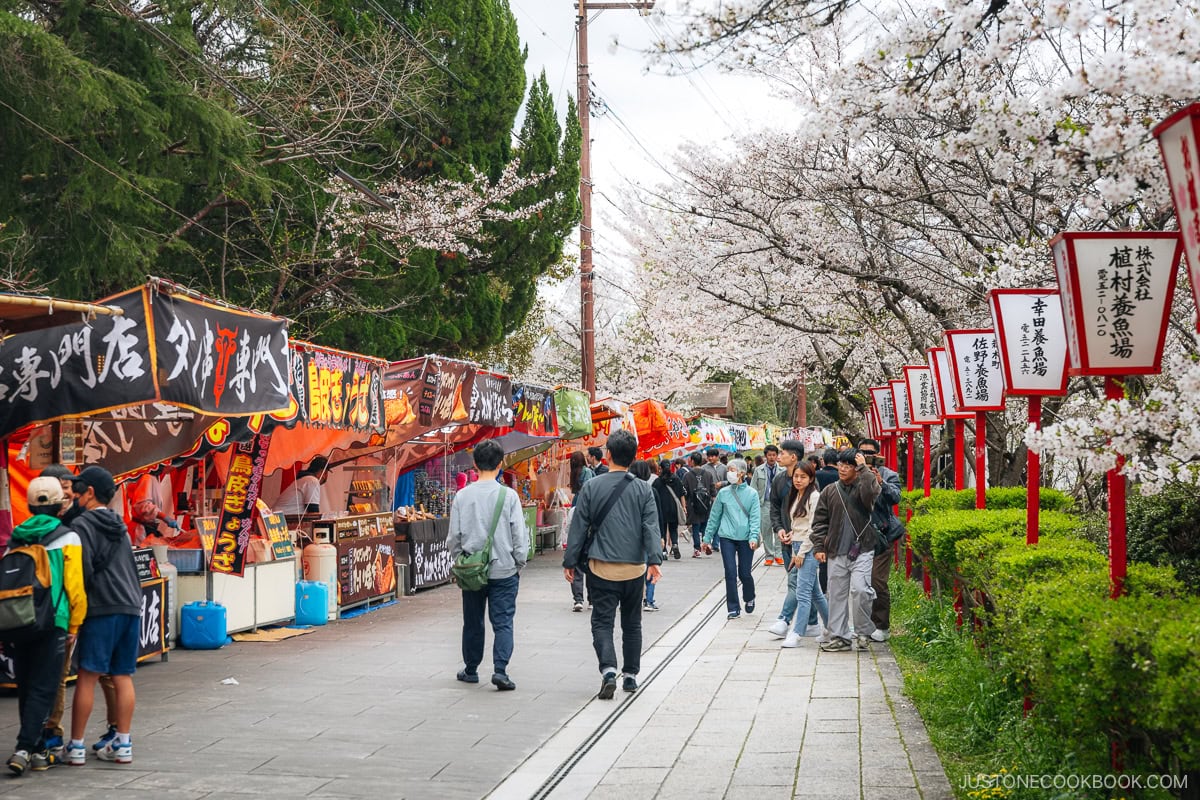

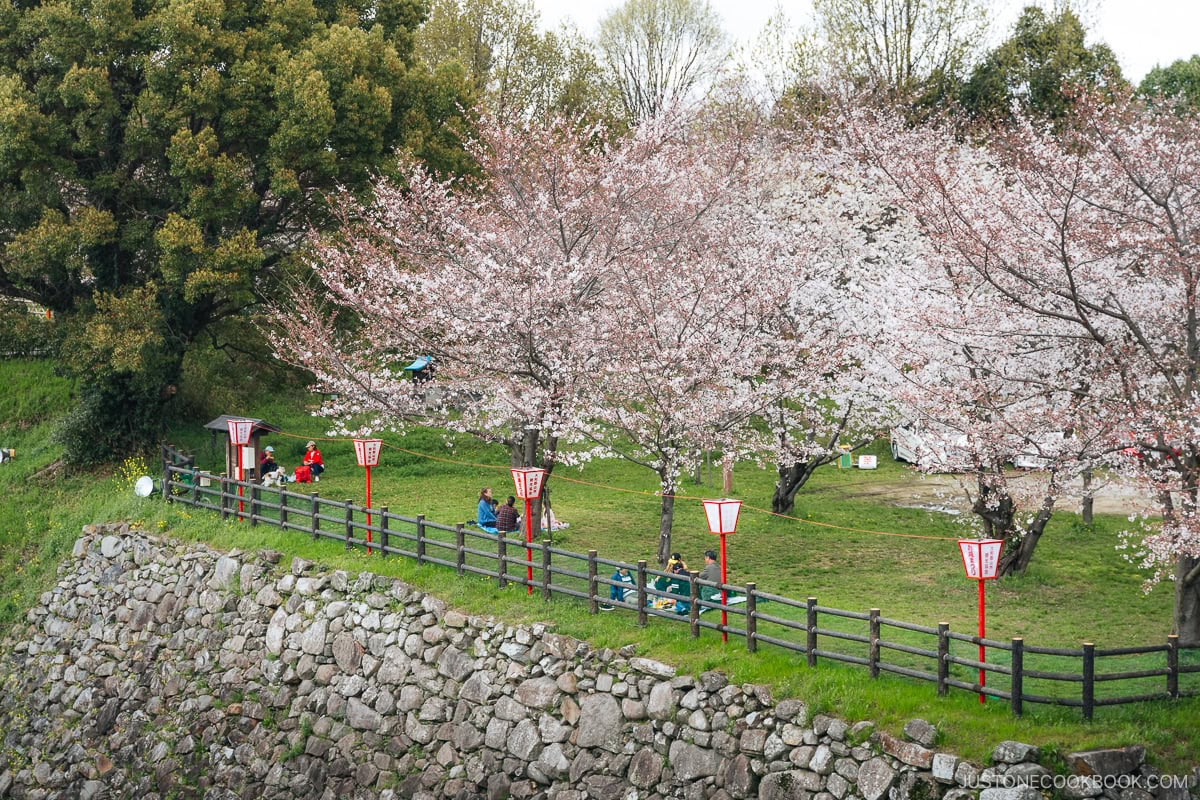

While the present-day castle is mostly ruins, the mix of the meandering moat, historical architecture, and pockets of ethereal hues of pink blossoms creates a fantastic way to enjoy the spring season.
Saho River 佐保川
Blooming Period: Late March to Early April
Photo date: April 4th 2024
A great way to explore Nara City is by bicycle. Its flat terrain in the center makes navigation and getting around simple and stress-free. I stumbled across the Saho River, which runs through the city’s spine. Lined with a staggering 5 kilometers of cherry trees, the river reminded me of Tokyo’s famous Meguro River cherry blossoms.


Yet, instead of encountering the endless crowds of Meguro, I found only locals enjoying picnics on the riverbed and families playing next to the water.
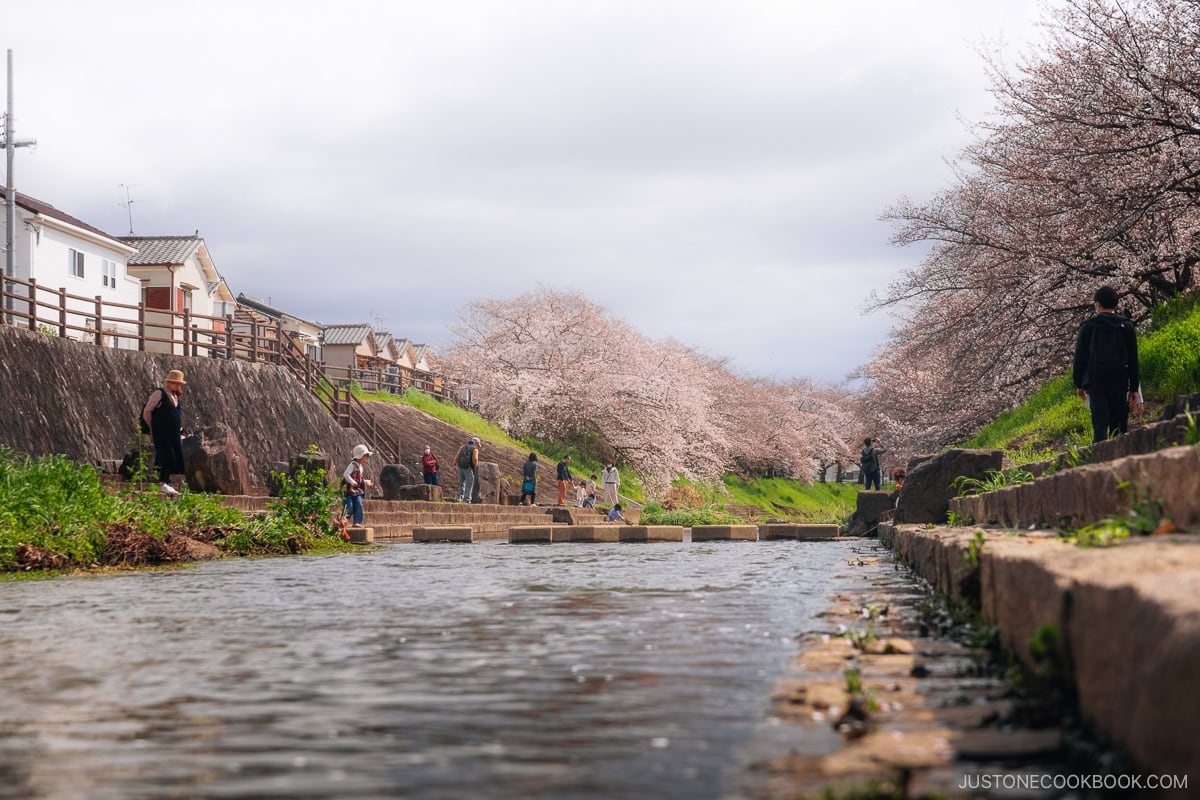
The river makes for a beautiful scenic bike ride, with spots along the way where you can sit and relax right next to the water, perfect for leisurely soaking in the spring scenery.
Matabei-Zakura 又兵衛桜
Blooming Period: Late March to Early April
Photo date: April 5th 2024
Nara offers more than just its central town. The southern parts of the prefecture boast some of the best and most beautiful cherry blossom spots. The first among them is Matabei-Zakura, an iconic weeping cherry tree estimated to be over 300 years old.
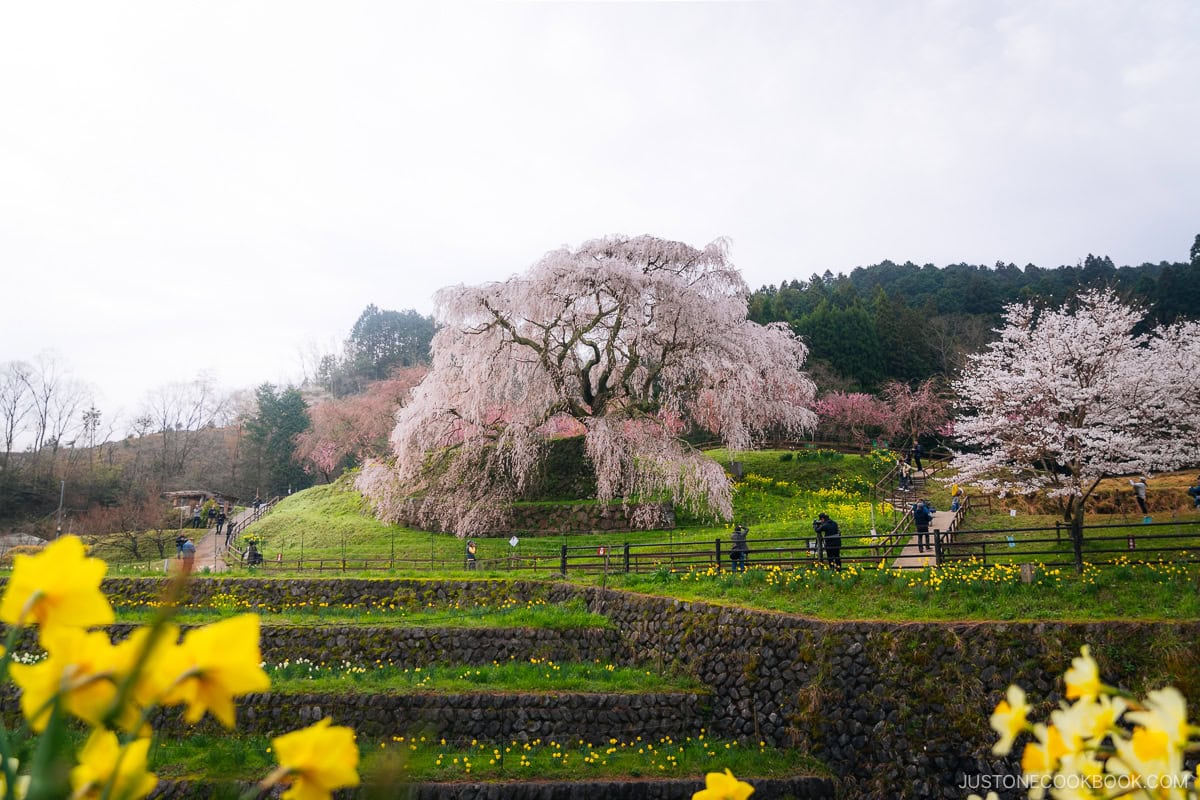
Legend has it that Sengoku warrior Goto Matabei escaped to this spot and became a priest during the latter period of his life, hence the tree’s name. The impressive tree stands at 13 meters tall with a circumference of 3 meters, and its cherry blossoms elegantly cascade down its branches.
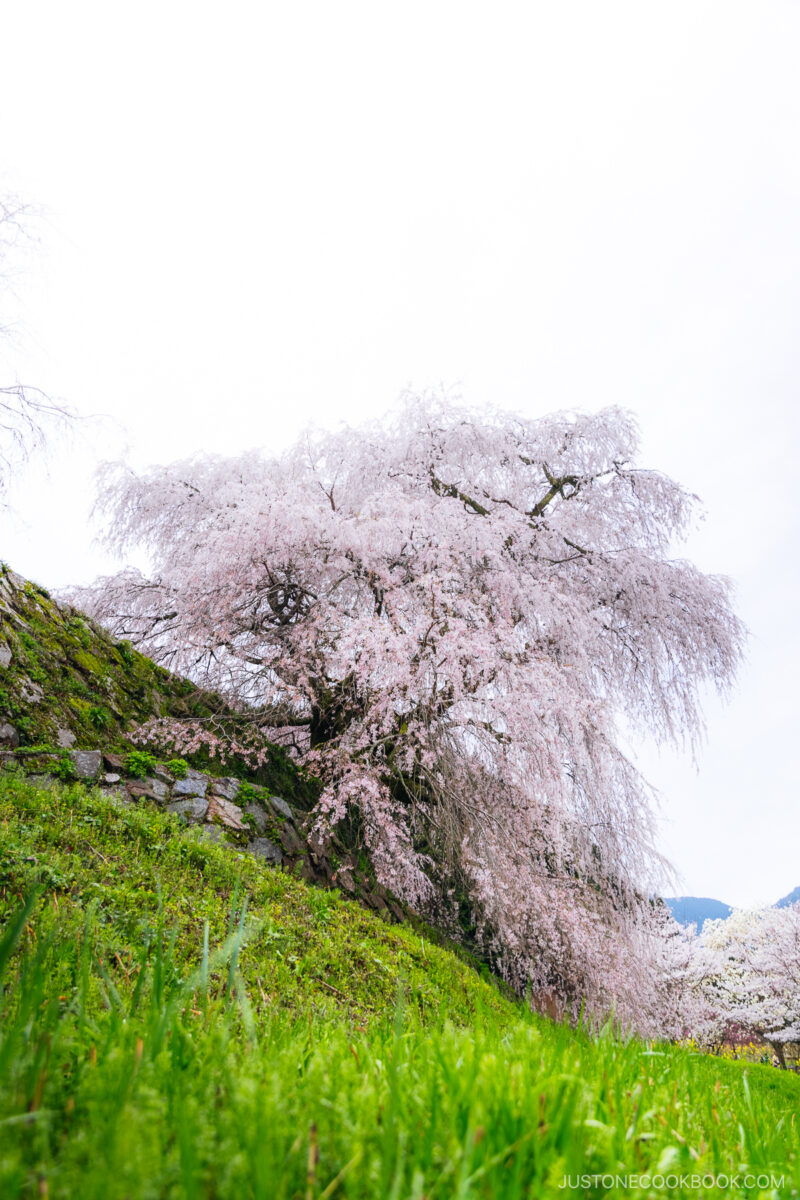
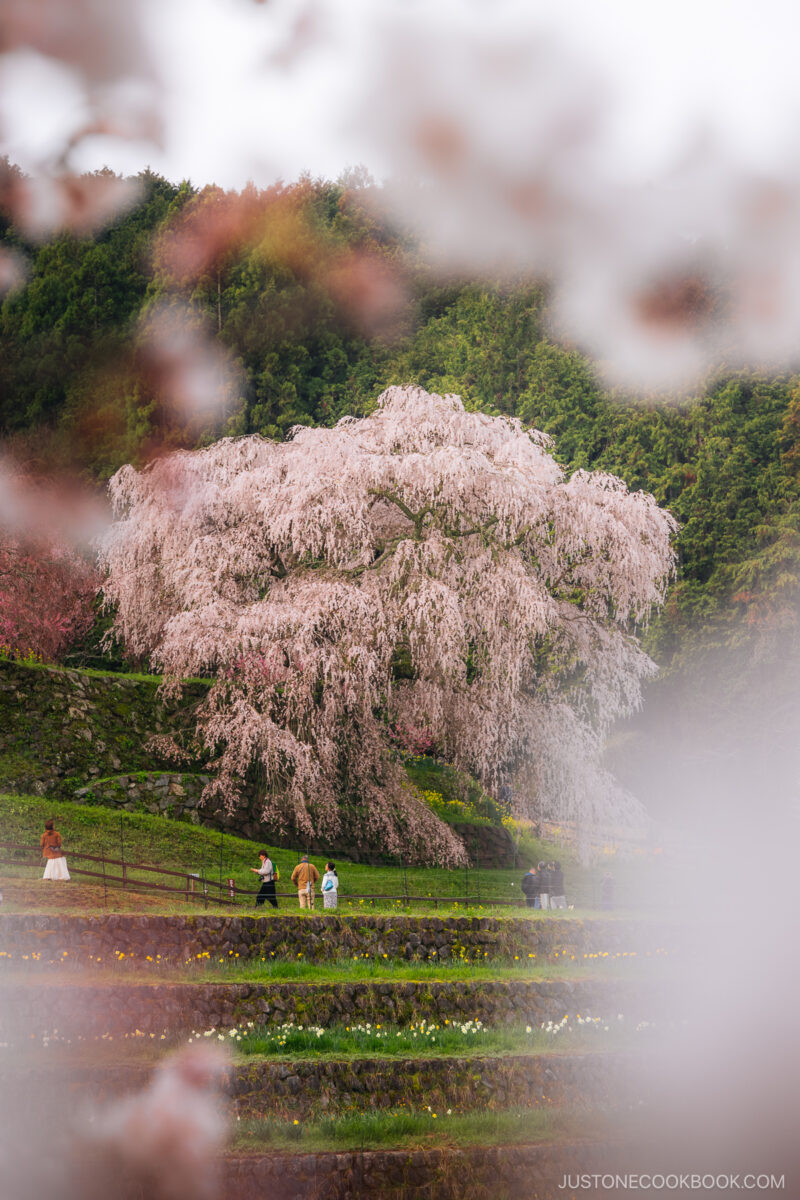
This was, by far, one of the most impressive cherry trees I have ever seen and is definitely worth visiting, especially for photographers.
While Matabei-Zakura is accessible by train and bus, it takes nearly two hours, involving various line changes and a lot of walking. I recommend renting a car and exploring the entirety of southern Nara in a day.
Tsubosakadera 壷阪寺
Blooming Period: Late March to Early April
Photo date: April 5th 2024
Located on Tsubosaka Mountain, this unique temple combines Japanese and Indian influences. Completed in 717, Tsubosakadera is renowned as a place of healing and profound beauty. According to legend, a local shaman discovered a Senju Kannon (a thousand-armed Buddha) buried here, granting him healing powers. The shaman cured the Empress of her eye disease, and in return, she built Tsubosakadera. This story, along with the Senju Kannon, has been enshrined in the octagonal Hakkaden Hall.
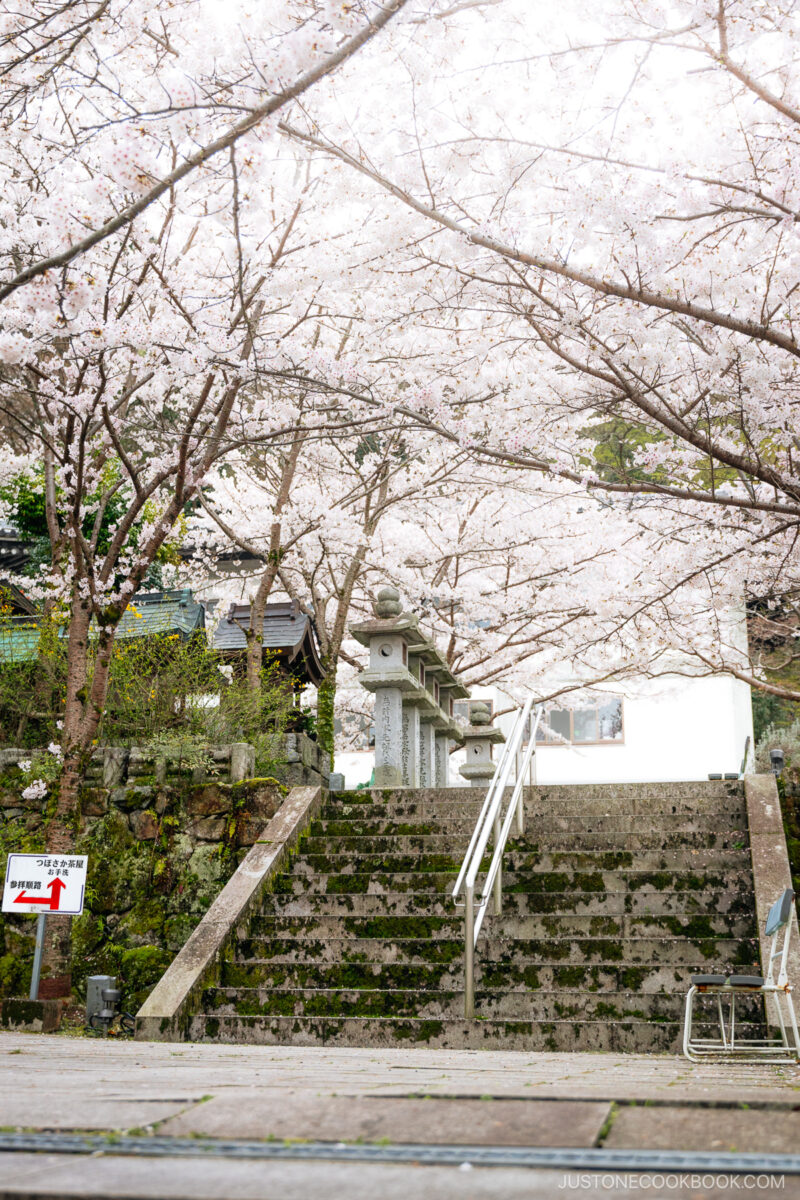
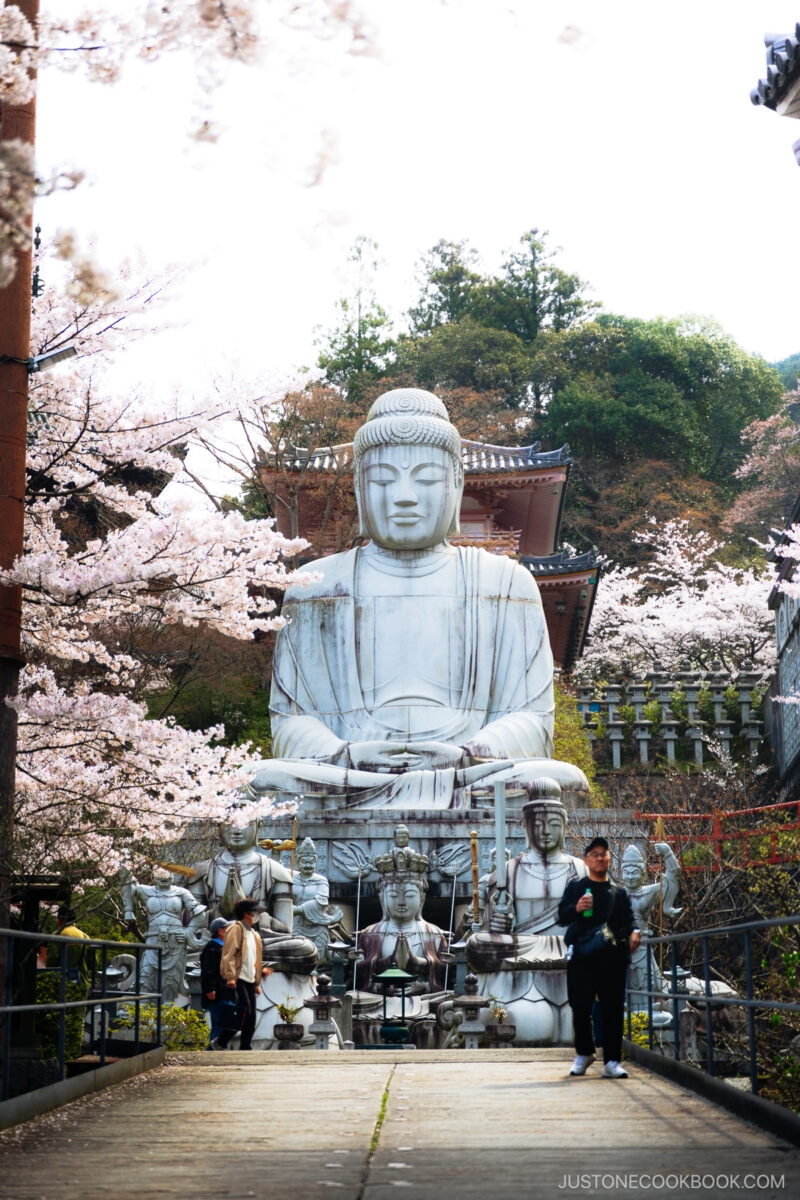
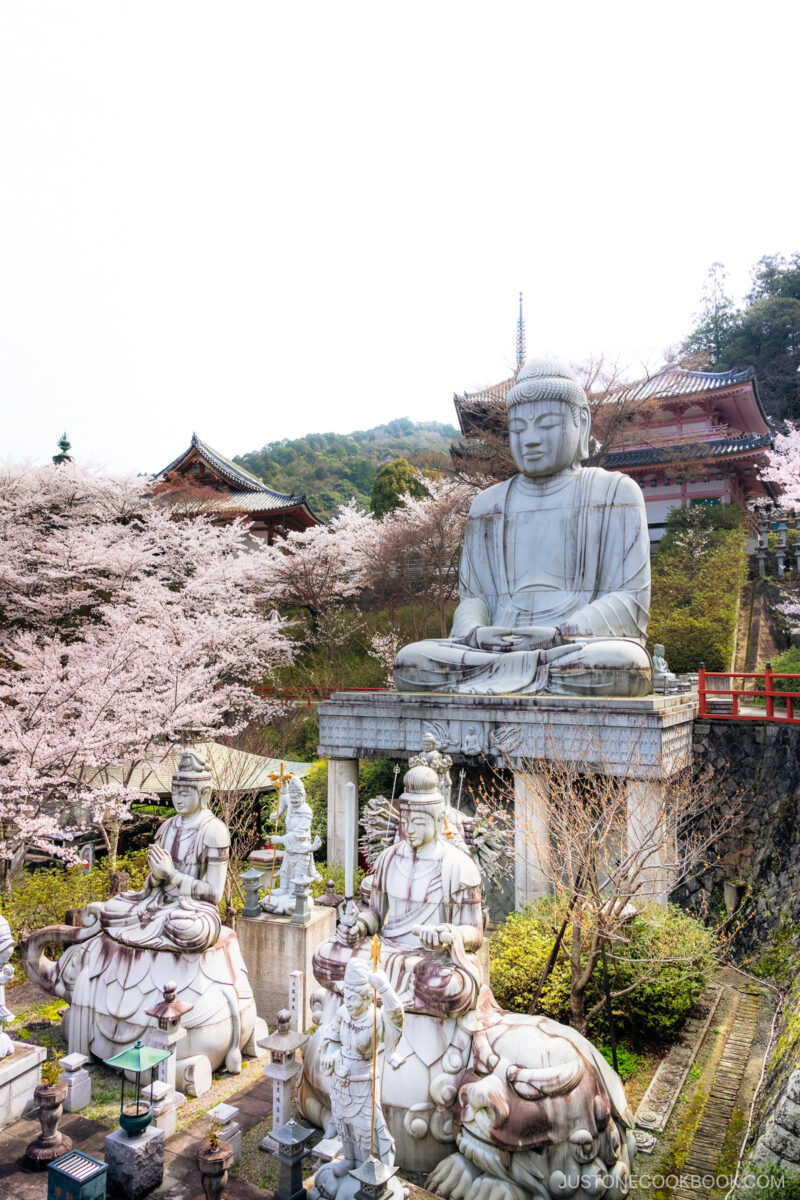

In the center of the temple stands a giant Buddha statue, surrounded by clouds of pink cherry blossoms. As you approach the temple, the statue comes into full view.
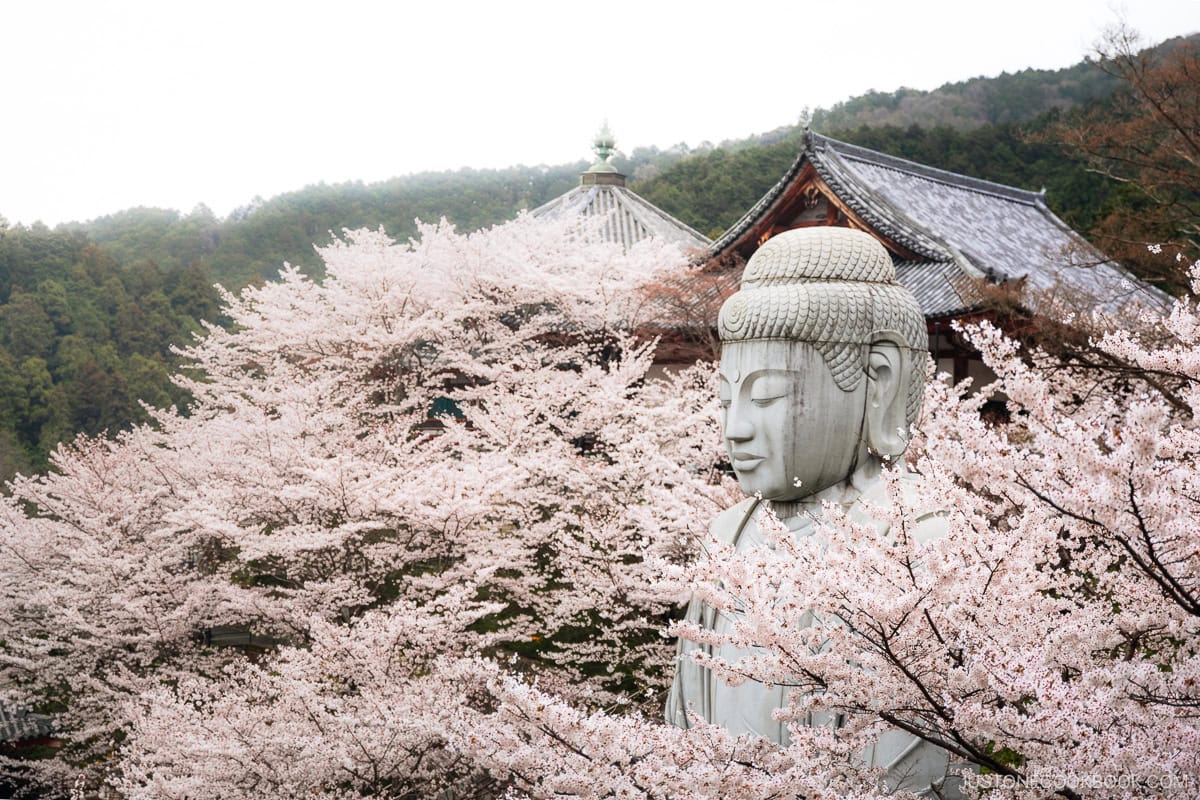

Head to the right of the statue and up a few staircases, which will take you to a viewing platform. You’ll get an iconic view of the Buddha statue’s head poking out from the sea of cherry blossoms.

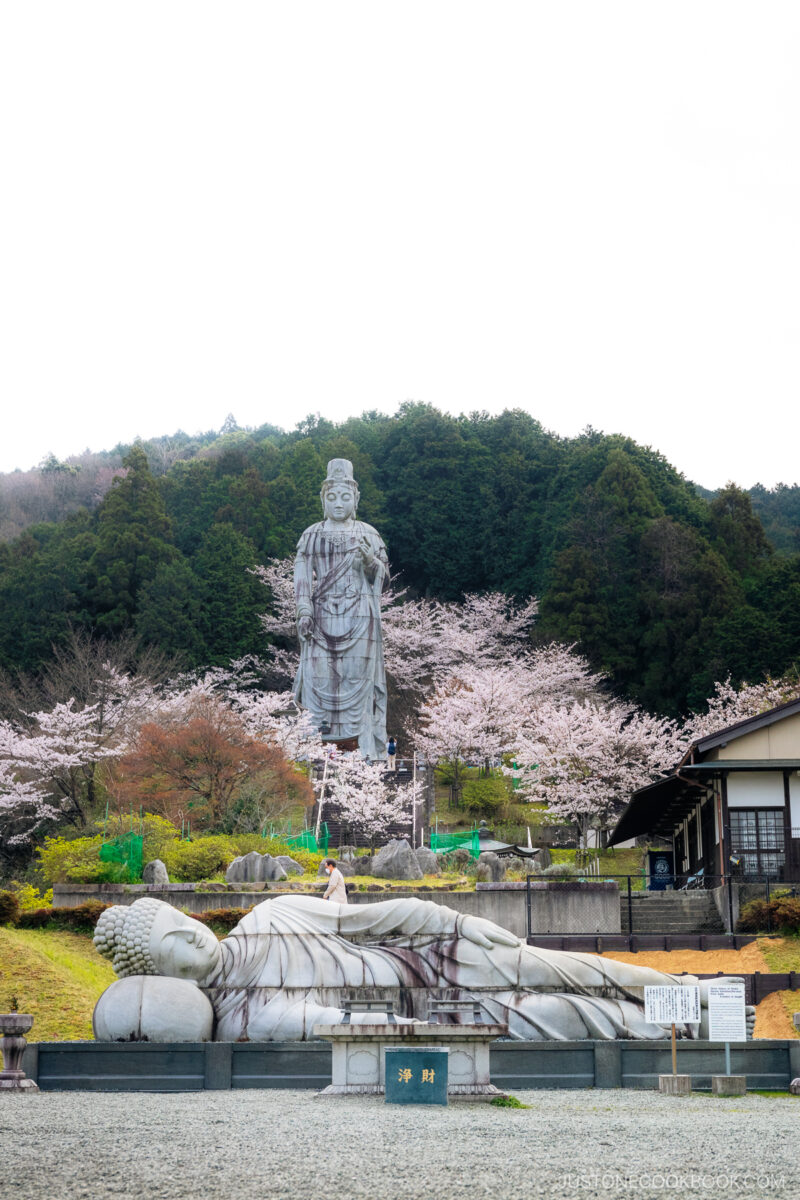
To the right side of the temple grounds is a 20-meter-tall Kannon Statue, jointly built by India and Japan as a symbol of friendship and compassion. This handcrafted statue took over four years to complete.
Throughout the grounds, visitors can discover a 3-story pagoda dating back to 1497, a wall adorned with bas-relief sculptures narrating the tale of the Buddha, and a sanctuary reminiscent of the Taj Mahal.




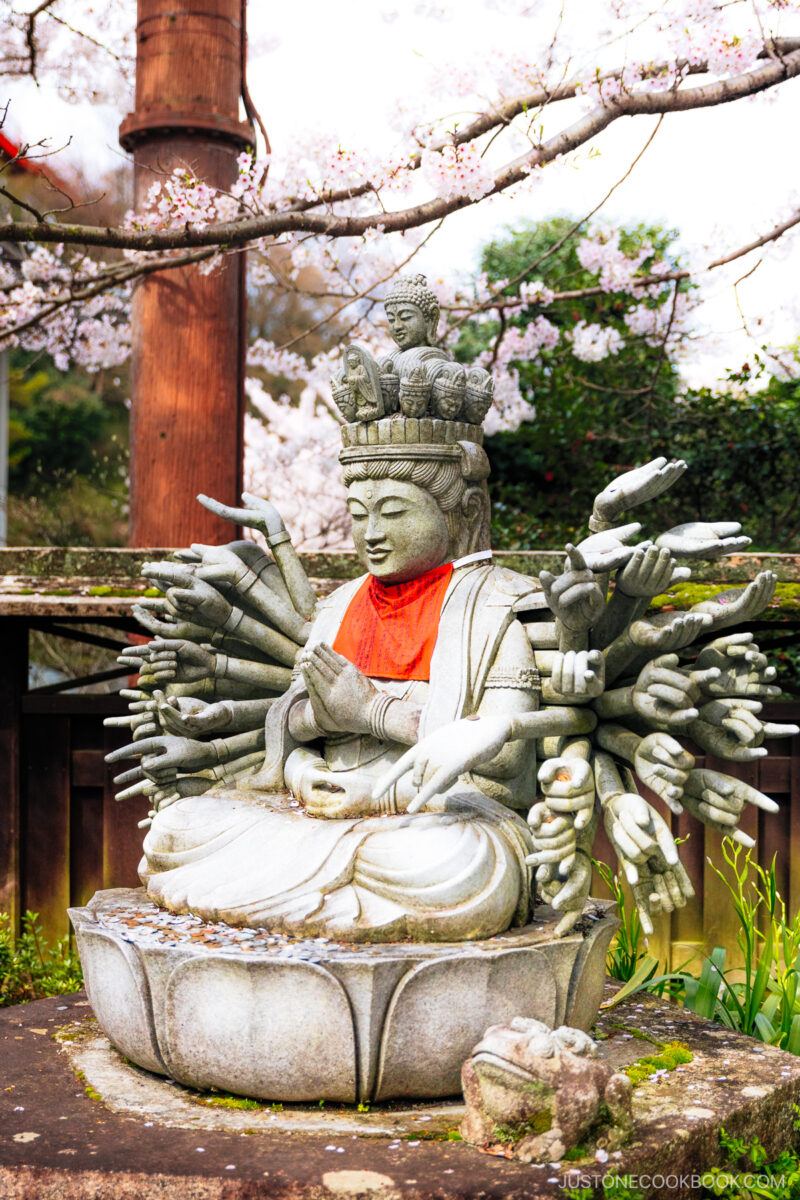
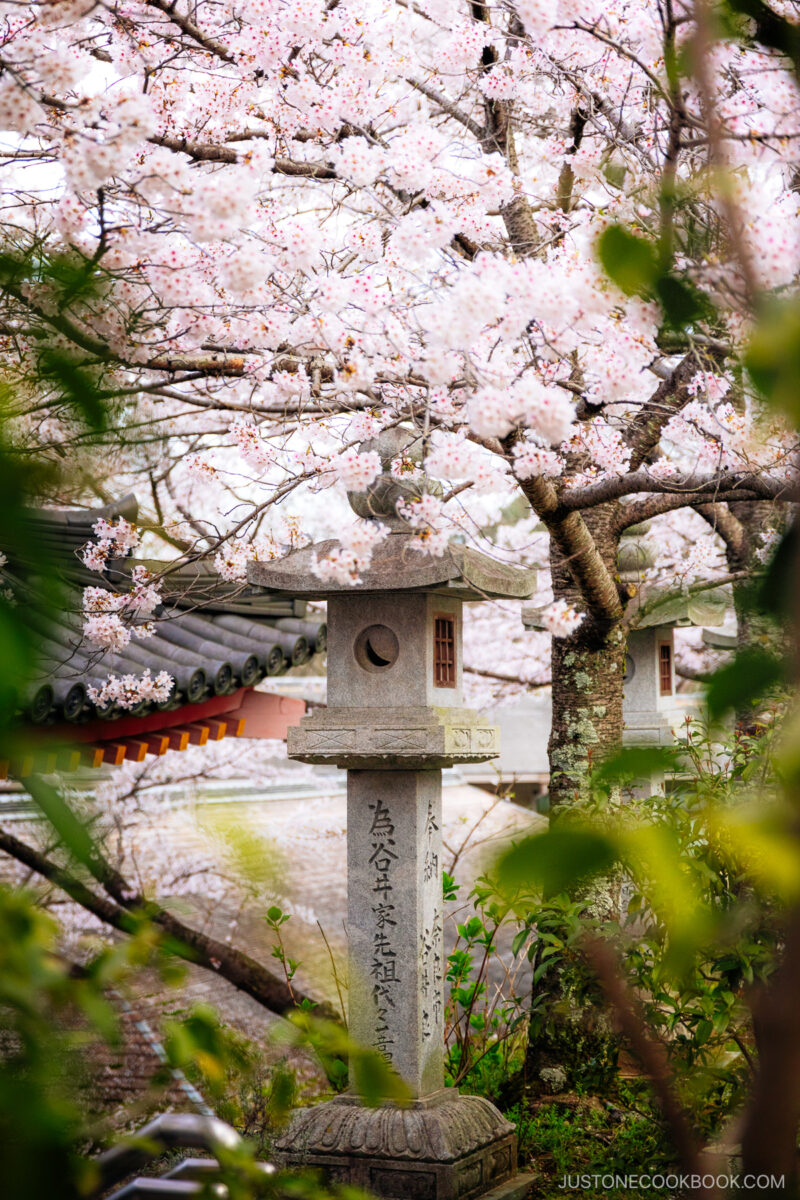
There is so much to explore and uncover around the temple grounds, so take your time exploring every nook and cranny. And let’s not forget the cherry blossoms, which I was fortunate to see in full bloom!
The distinctive composition and combination of structures make Tsubosakadera unmatched compared to other traditional temples.
Hasedera 長谷寺
Blooming Period: Late March to Early April
Photo date: 5th April 2024
Hasedera, established in 686, serves as the head temple of the Bunzan school of Shingon Buddhism, overseeing approximately 3,000 small temples nationwide. This iconic temple is situated near the mountaintop, surrounded by countless flowers, earning it the name ‘Temple of Flowers’.
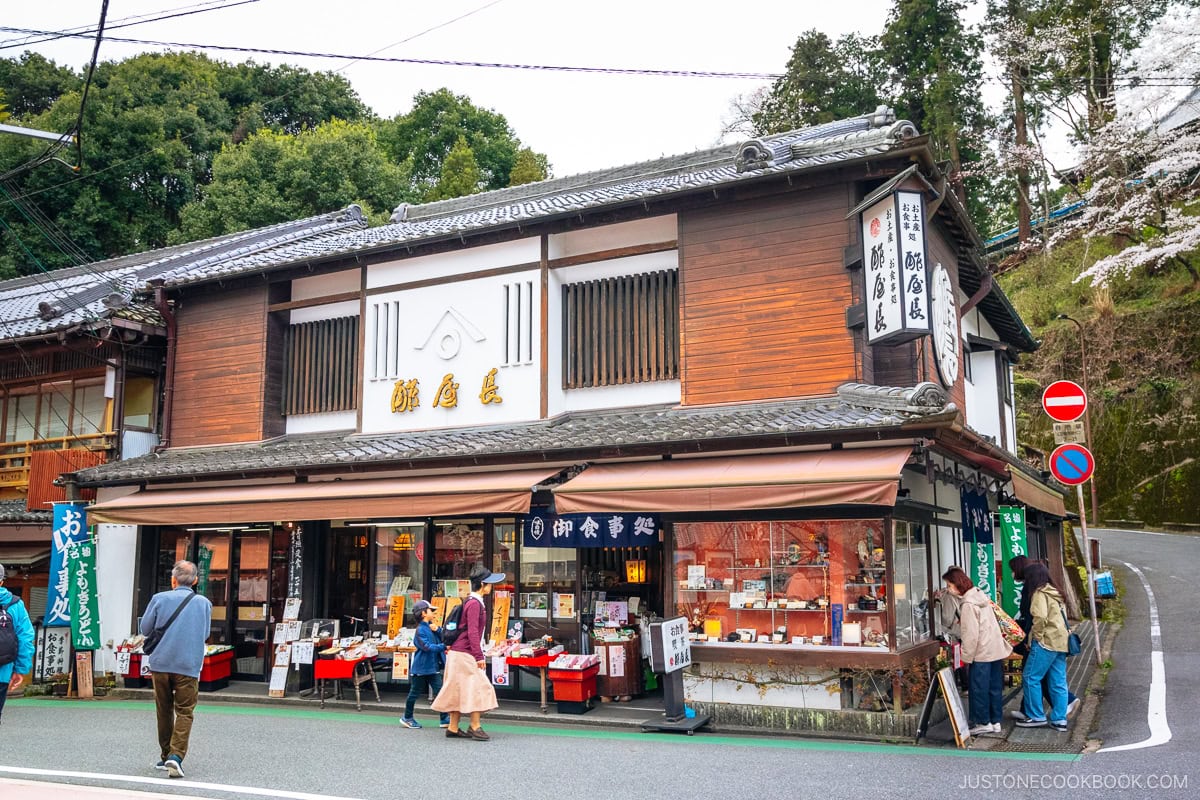
The approach to the temple consists of a small network of roads lined with dozens of shops, inviting you to explore, dine, and shop your way through.
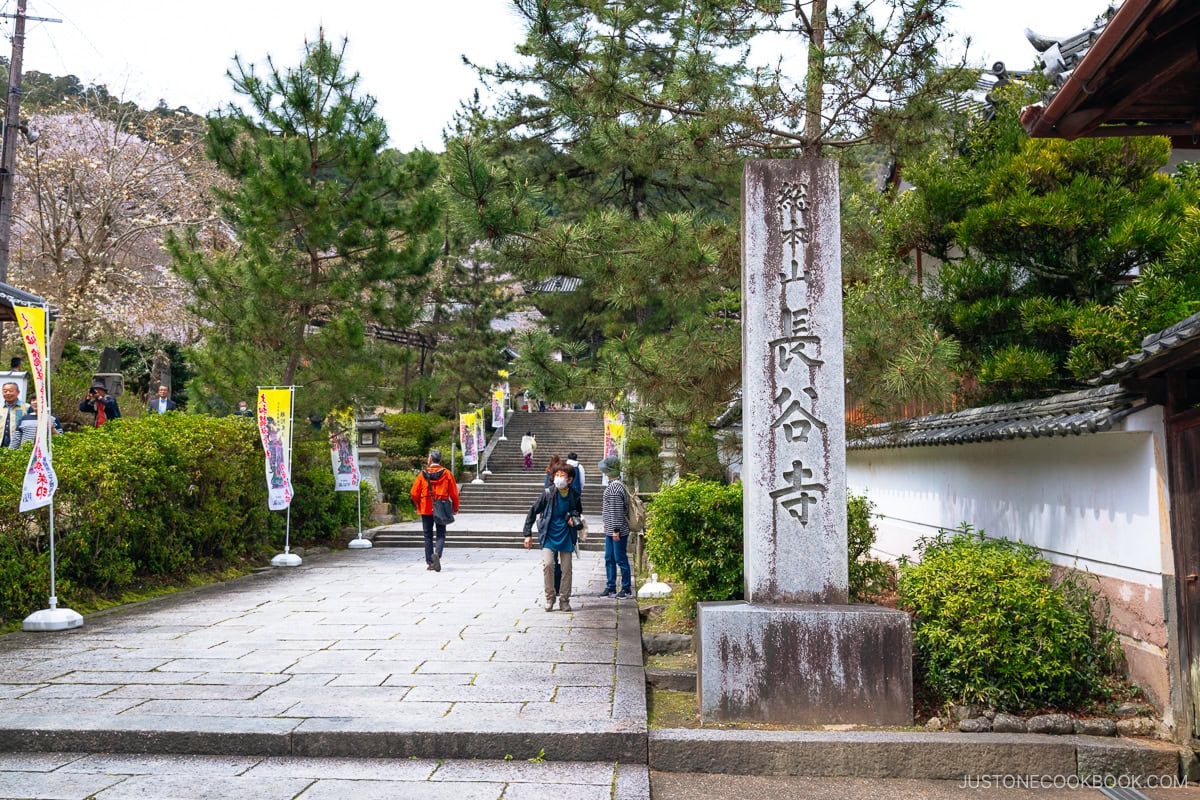
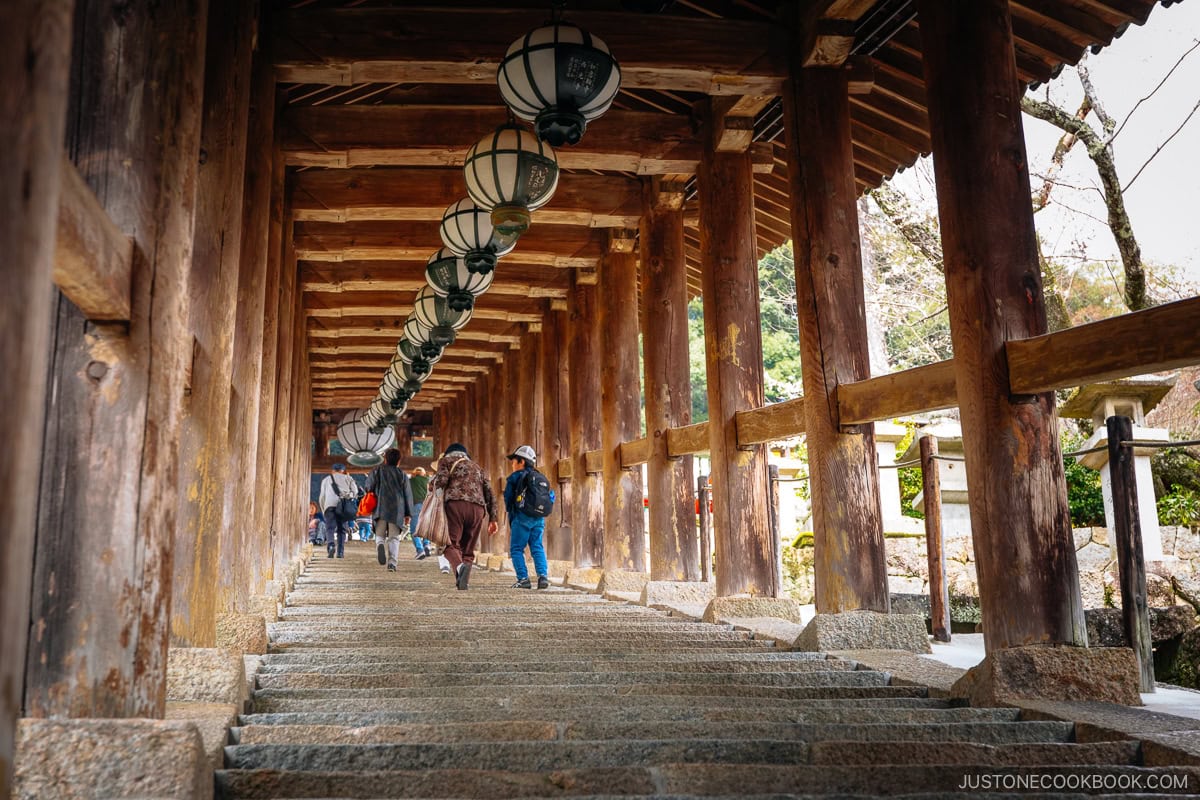
Beyond the entrance gate, a sequence of long corridors awaits, with almost 400 steps leading up to the main hall. Though not too steep, you will definitely work up a sweat, so wearing comfortable shoes is recommended.
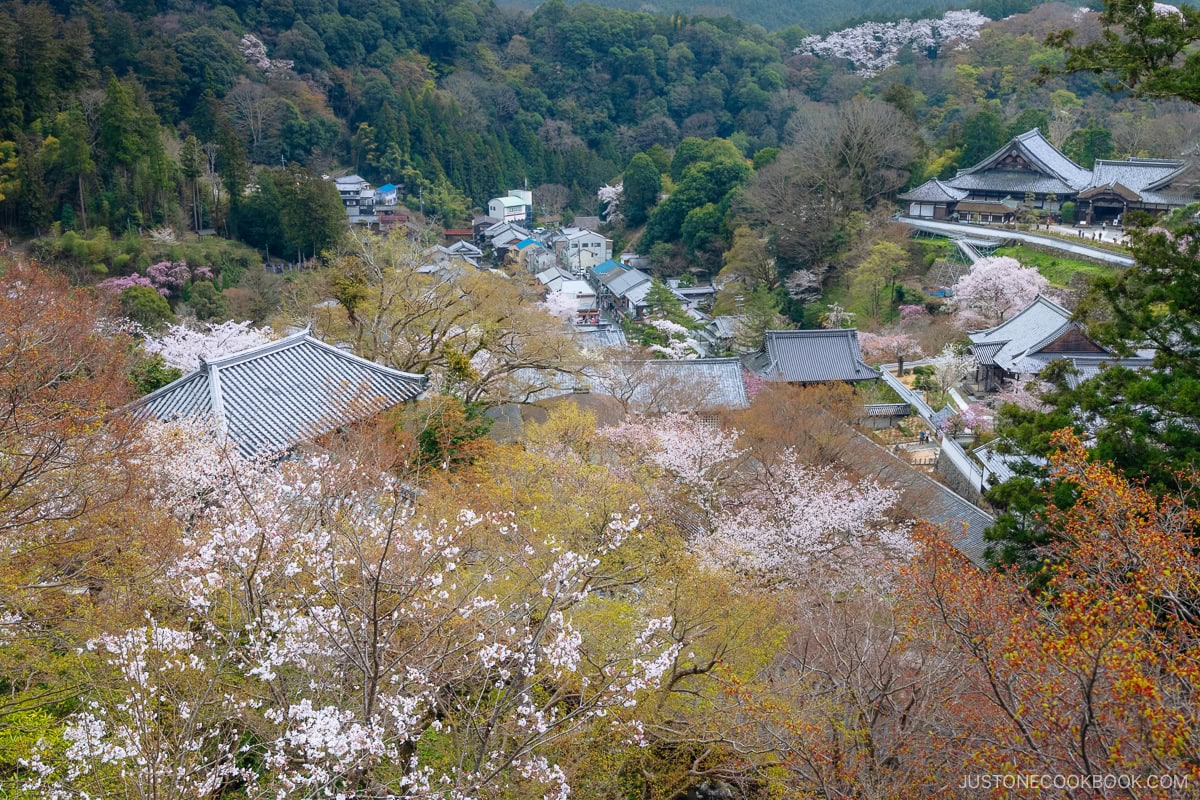
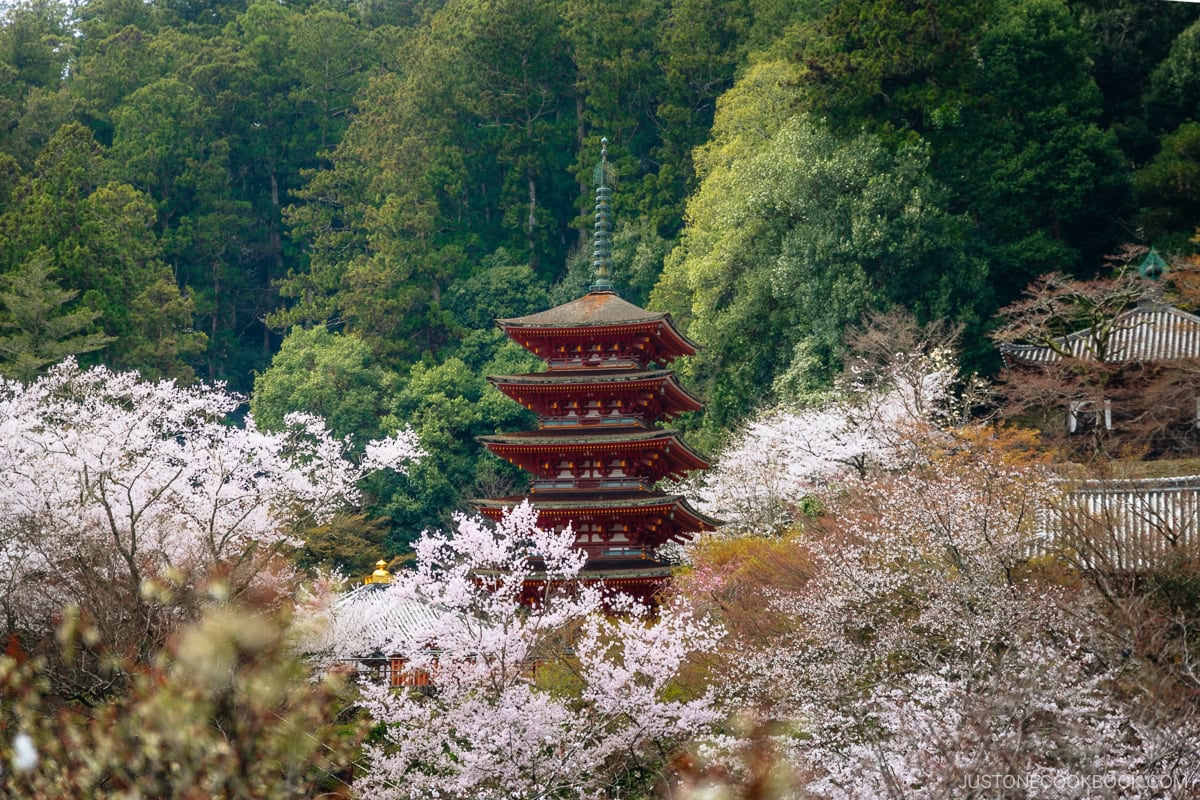

Hasedera Temple Grounds
After climbing all the steps, you will be rewarded with stunning views over the temple grounds, especially the five-story pagoda that rises from a sea of white and pink cherry blossoms.



Active monks live and practice in the temple, so be sure to respect their space and refrain from disturbing them.
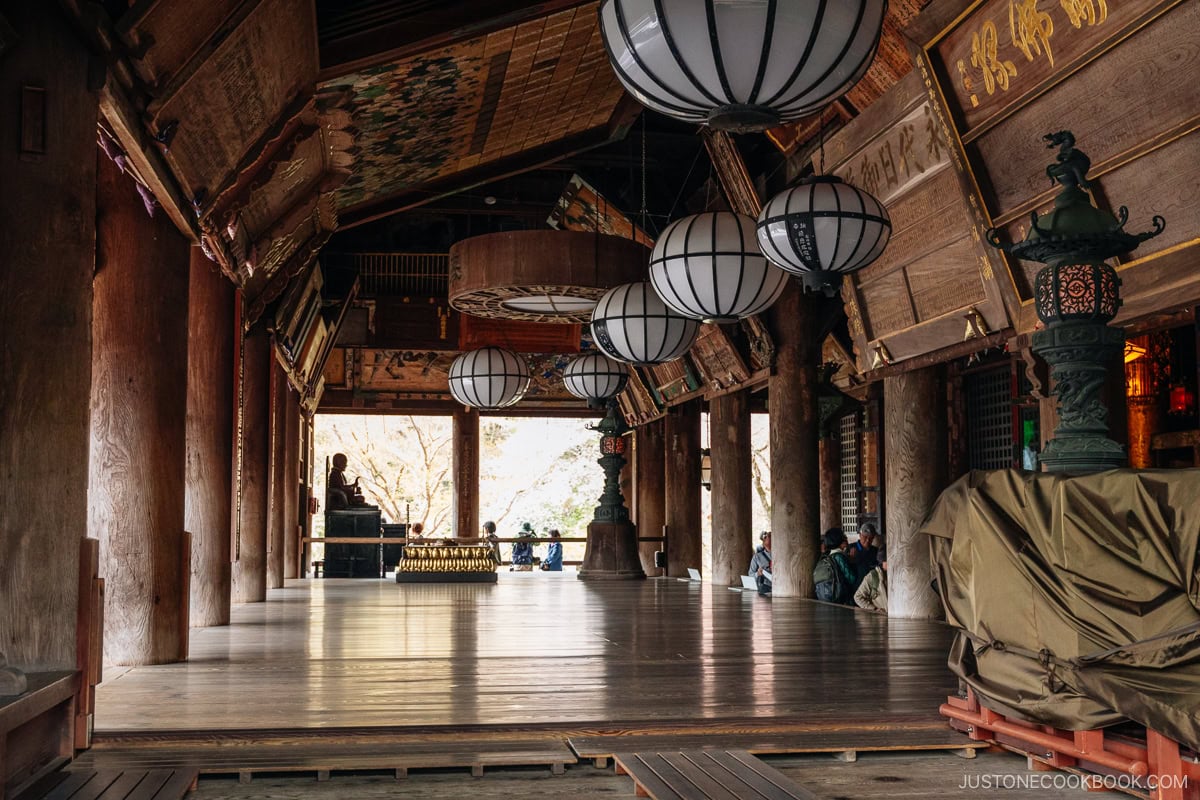
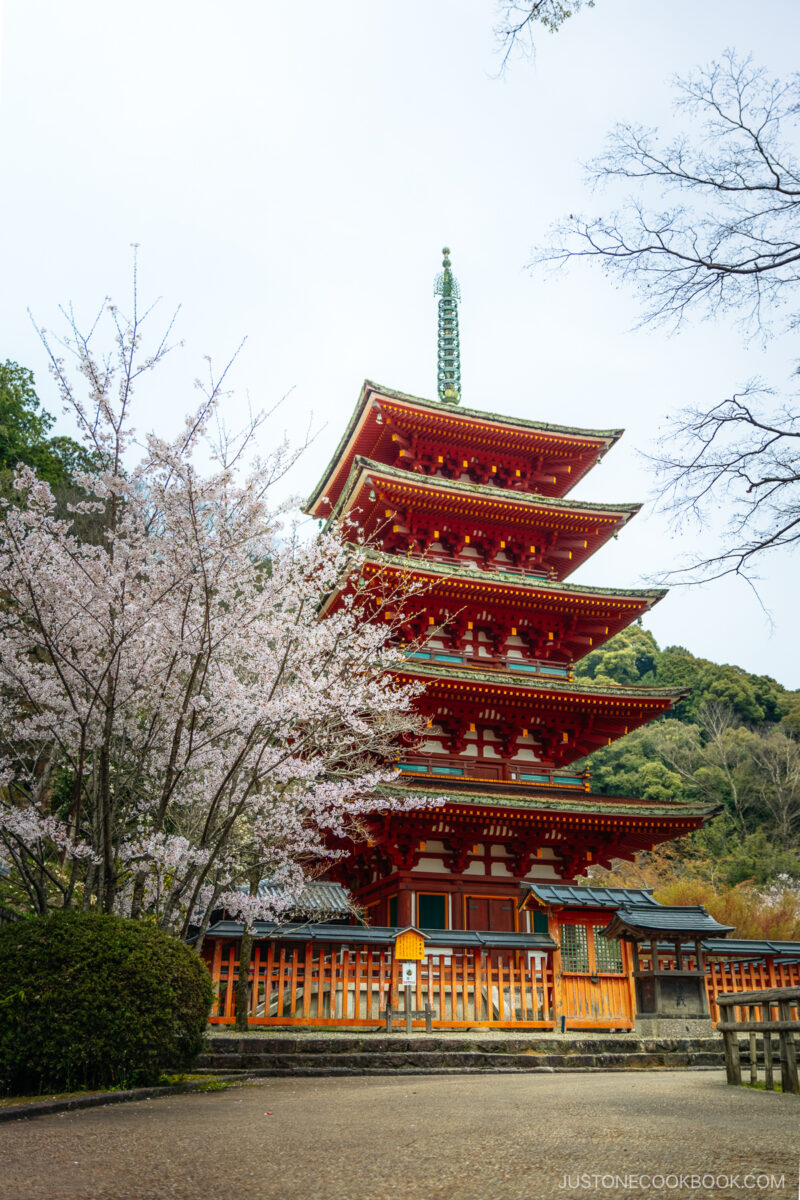
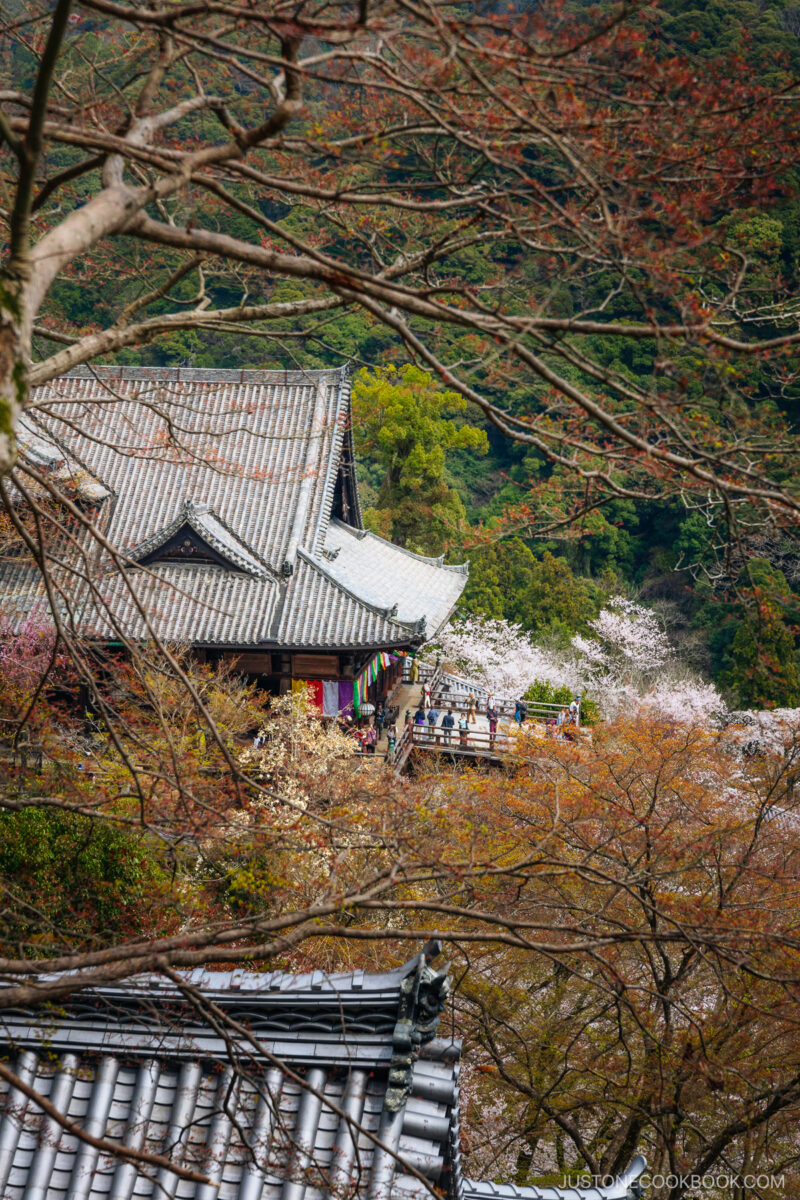
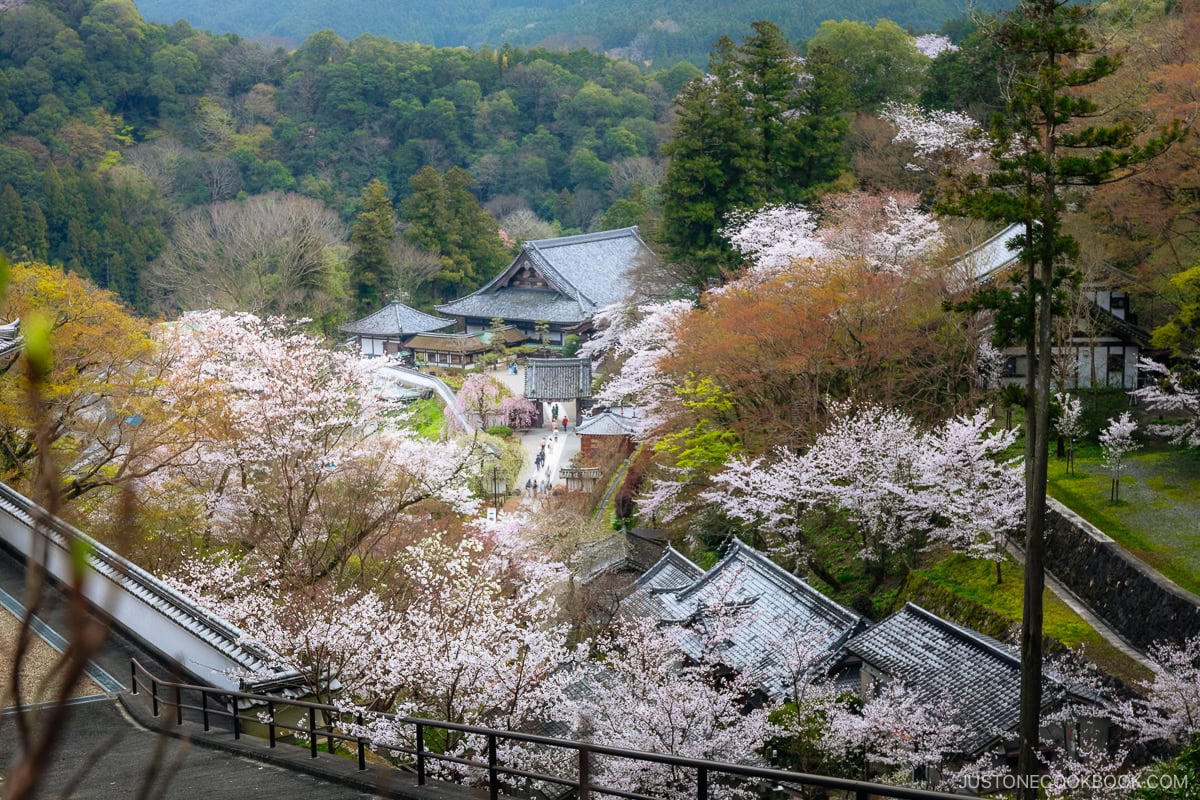
The main hall houses a twelve-meter-tall wooden statue of the Kannon deity, complemented by the stunning wooden architecture of the hall.
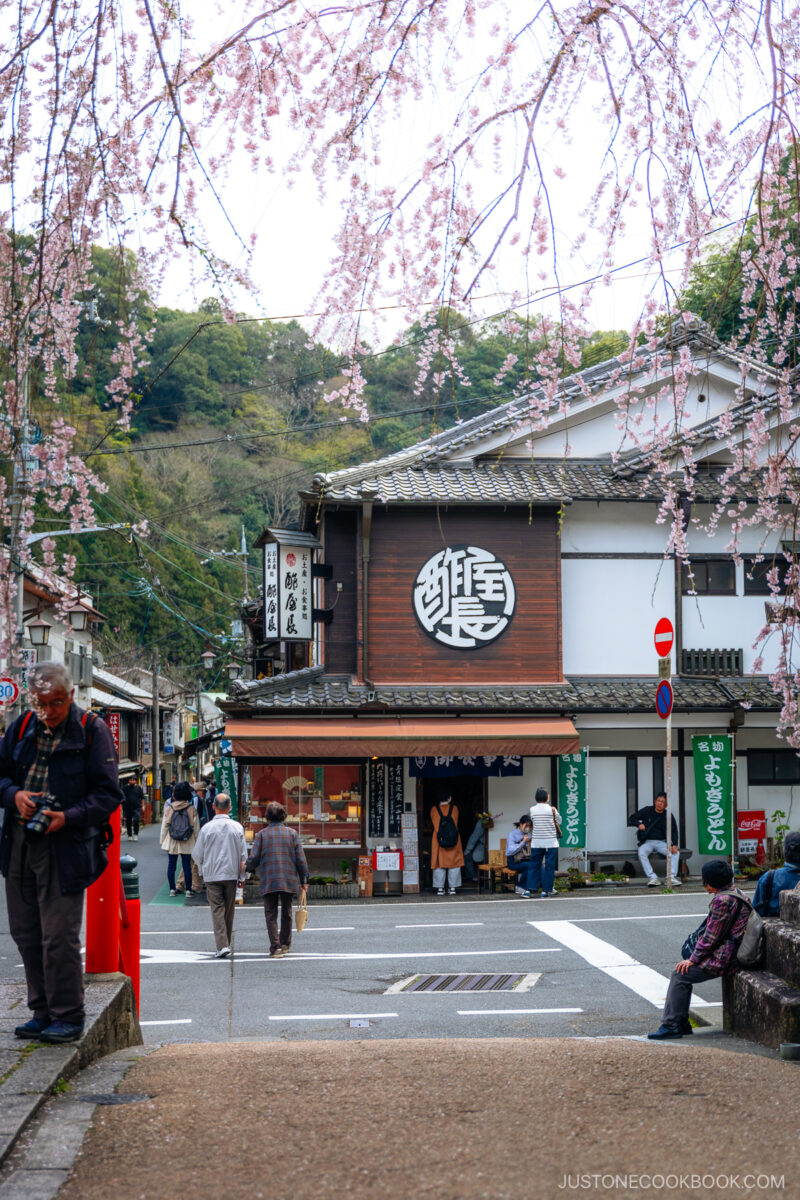
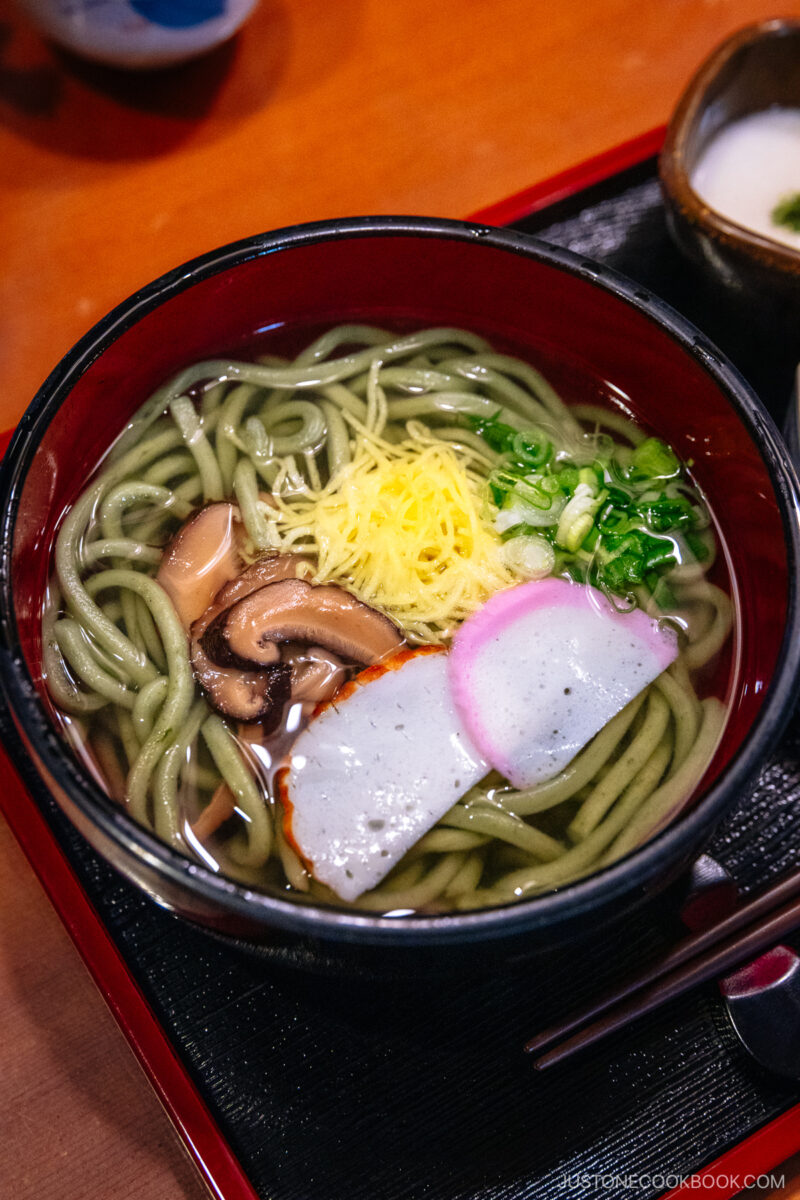
The temple’s grounds are so vast that you could spend half a day wandering around. However, after climbing all those stairs, I was hungry! Near the temple entrance, you can find a small restaurant called Suyacho (酢屋長). I tried the Mugwort udon, a local dish in the area. The udon had a slight earthy flavor and a texture akin to mochi, which I loved for its chewiness!

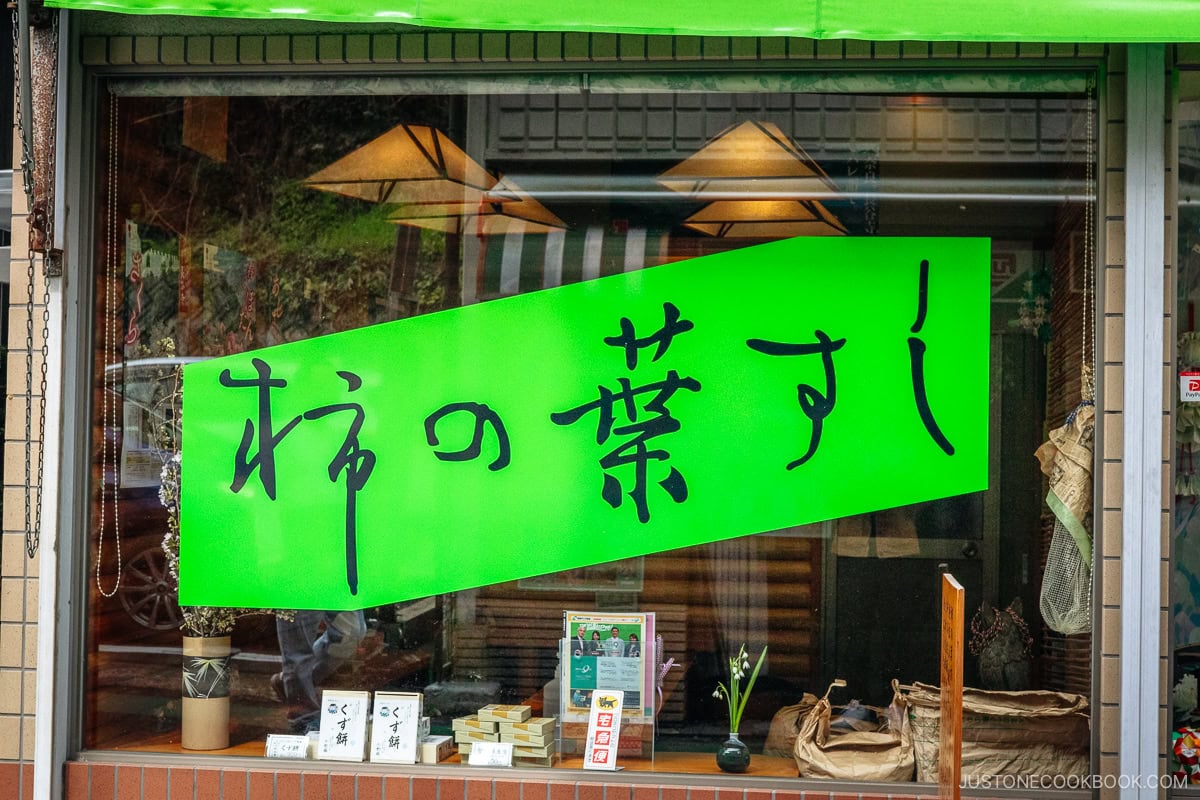
Another famous dish is Kakinoha-sushi, or persimmon leaf-wrapped sushi, which I picked up at a shop called Torase, a little further down the road. You can choose between mackerel or salmon-topped sushi, and you also have the option to dine in or grab a box to go.
Ishibutai Tumulus 石舞台古墳
Blooming Period: Late March to Early April
Photo date: April 5th 2024
If you’re driving around south Nara, it’s worth stopping by Ishibutai Tumulus. Originally, it was thought that the stones were part of a performing stage, as ‘Ishi‘ (石) means ‘stone,’ and ‘butai‘ (舞台) means ‘stage.’ However, in the 1930s, parts of a sarcophagus were found, leading to the belief that it is actually the tomb of Soga no Umako, an influential figure who worked closely with Prince Shotoku during the Asuka period to promote Buddhism.
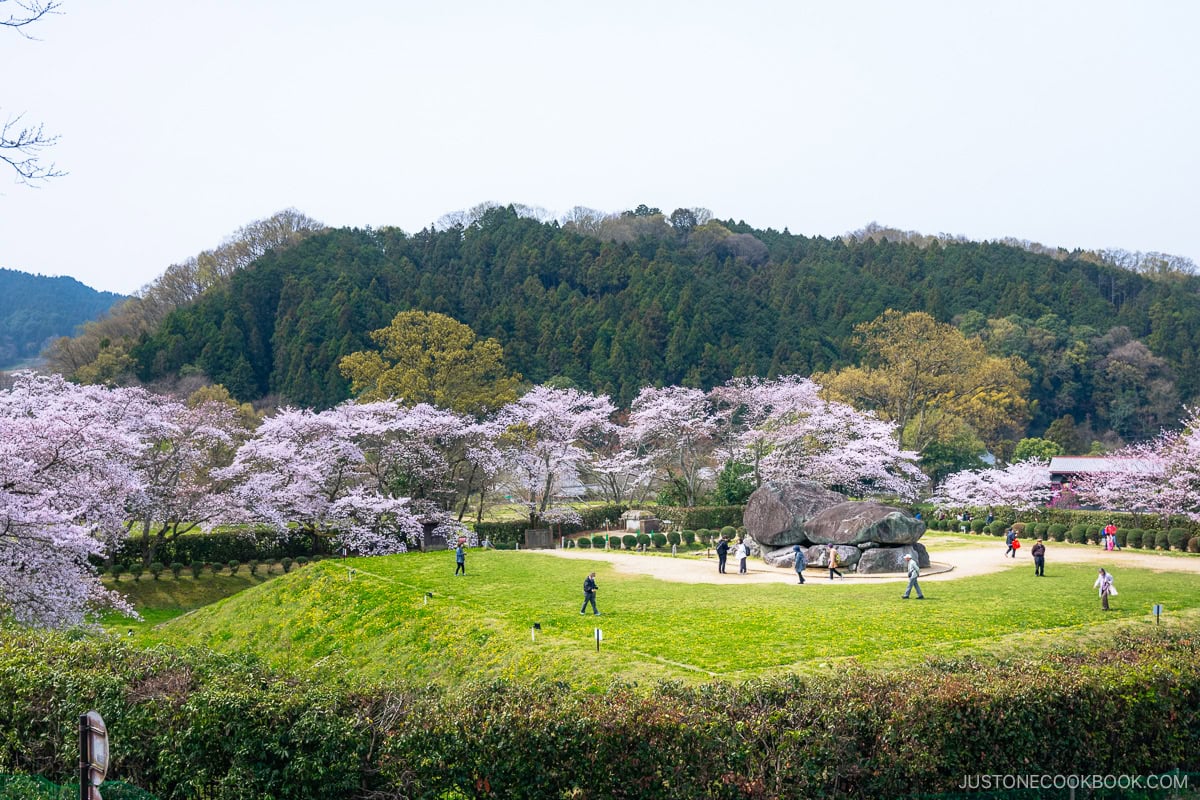
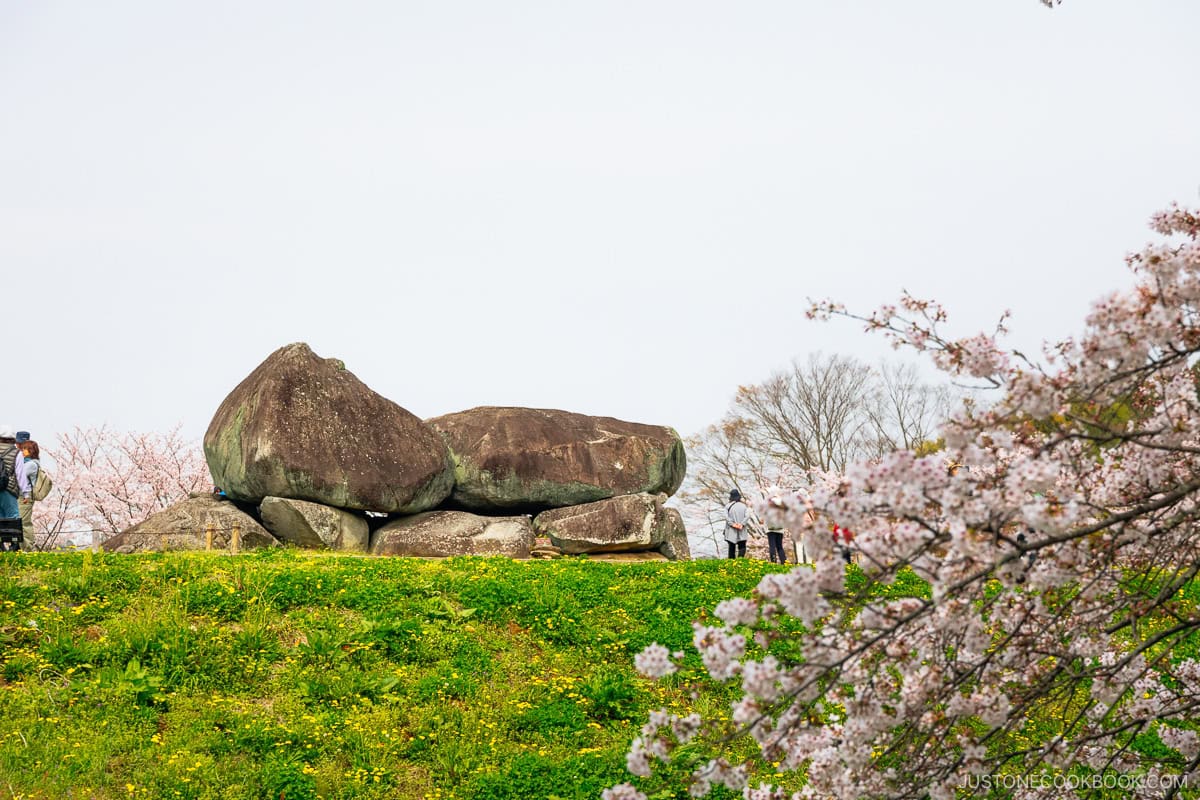
For an entrance fee of 300 yen, you can explore the grounds and enter the stones, but aside from that, there is little else to do.

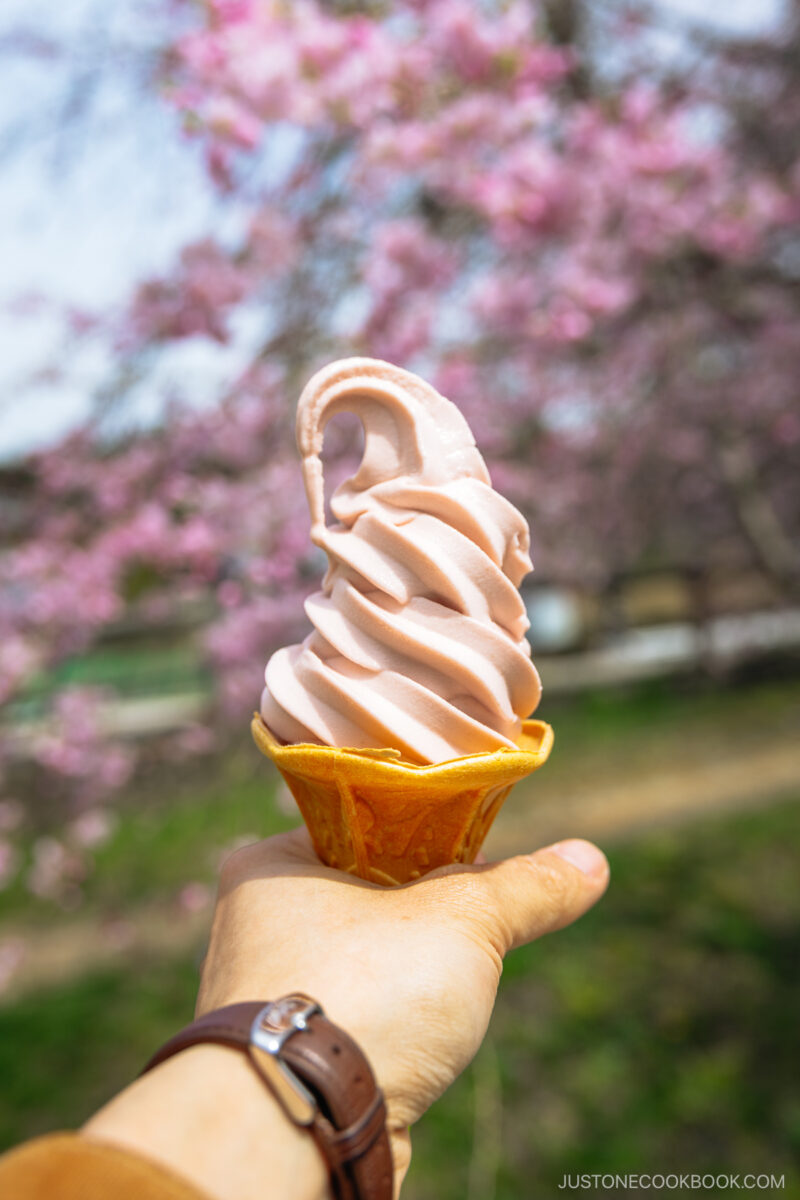
It was nice to enjoy the countryside of Nara and see locals having picnics under the sea of pink. I decided to join the action and picked up a sakura-flavored soft cream! It has a subtle floral taste with a hint of bitterness that balances nicely with the sweetness of the soft cream itself.
Mount Yoshino (Yoshinoyama) 吉野山
Blooming Period: Late March to Mid-April
Located in the southern mountains, Yoshinoyama’s cherry blossoms are some of the most picturesque not just in Nara, but in the entire country. Due to their mountainous location, they bloom later than the areas I mentioned above. Unfortunately, I just missed them by a week.
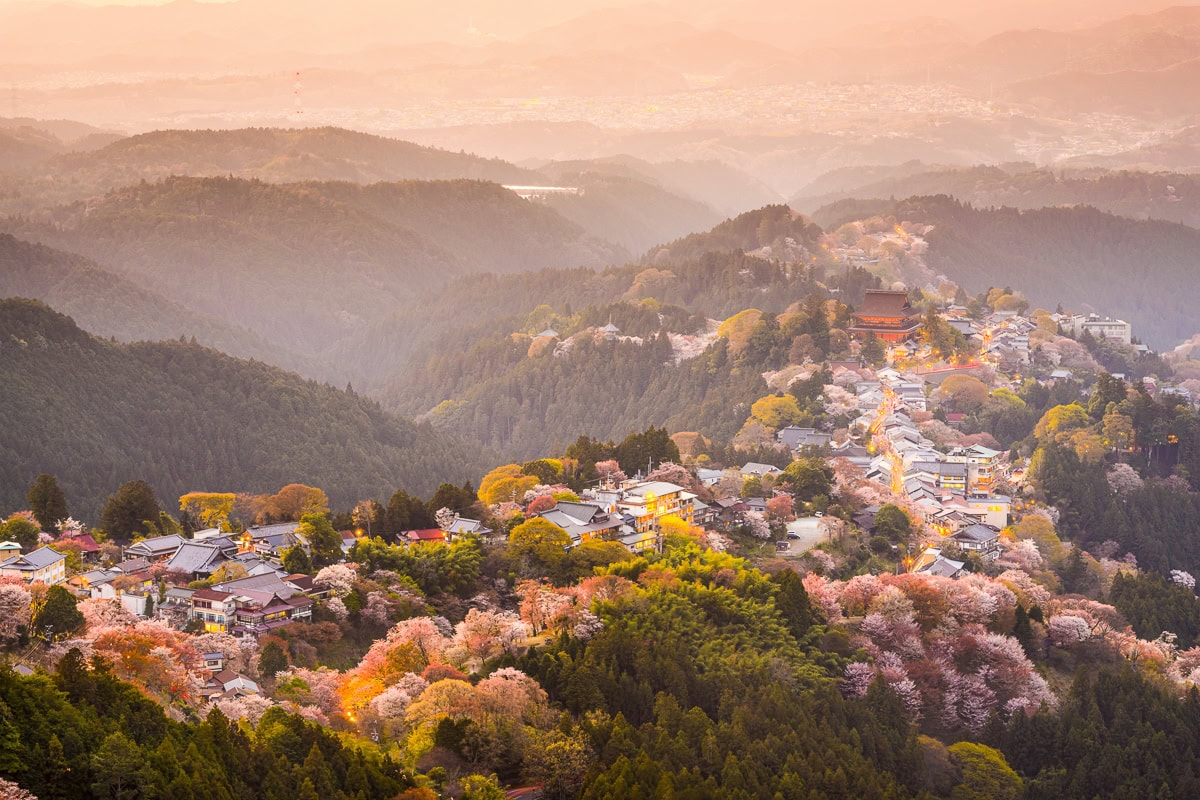
The area is spread out over various elevations, so blooming dates vary. However, if you manage to visit during full bloom, the scenes look surreal. Approximately 30,000 cherry trees cover the area, with the oldest tree said to have been planted over 1,300 years ago. Countless varieties of cherry blossoms, from yaezakura to yamazakura, each with unique characteristics, bathe the mountain in vivid pink hues. Its natural beauty and long history have earned it recognition as a UNESCO World Heritage Site.
Mount Yoshino Sections
The area is split into four sections:
- Shimo Senbon (lower 1000 trees) at the base of the mountain
- Naka Senbon (middle 1000 trees)
- Kami Senbon (upper 1000 trees)
- Oku Senbon (inner 1000 trees) located at the top
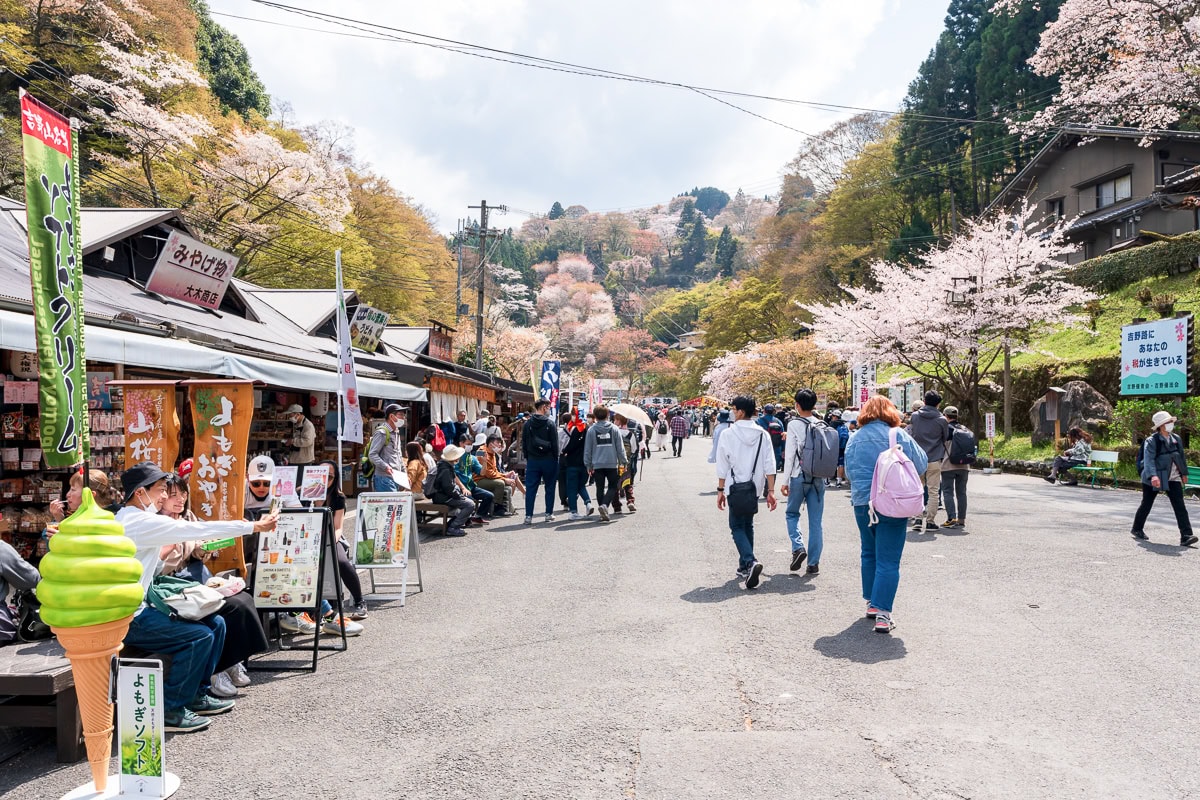
The Shimo Senbon connects the lower part of the town to the mountain base. You can ascend by cable car (though waiting times can be long during peak season) or hike up to experience the cherry blossoms up close.
Next, the Naka Senbon area encompasses the upper part of the town, where you can find many restaurants, shops, and accommodations. Two noteworthy spots are Kinpusenji Temple and Yoshimizu Shrine, along with Naka Senbon Park, famous for hanami. Shuttle buses also run between Yoshino Station and Naka Senbon during cherry blossom seasons, costing 450 yen one way.
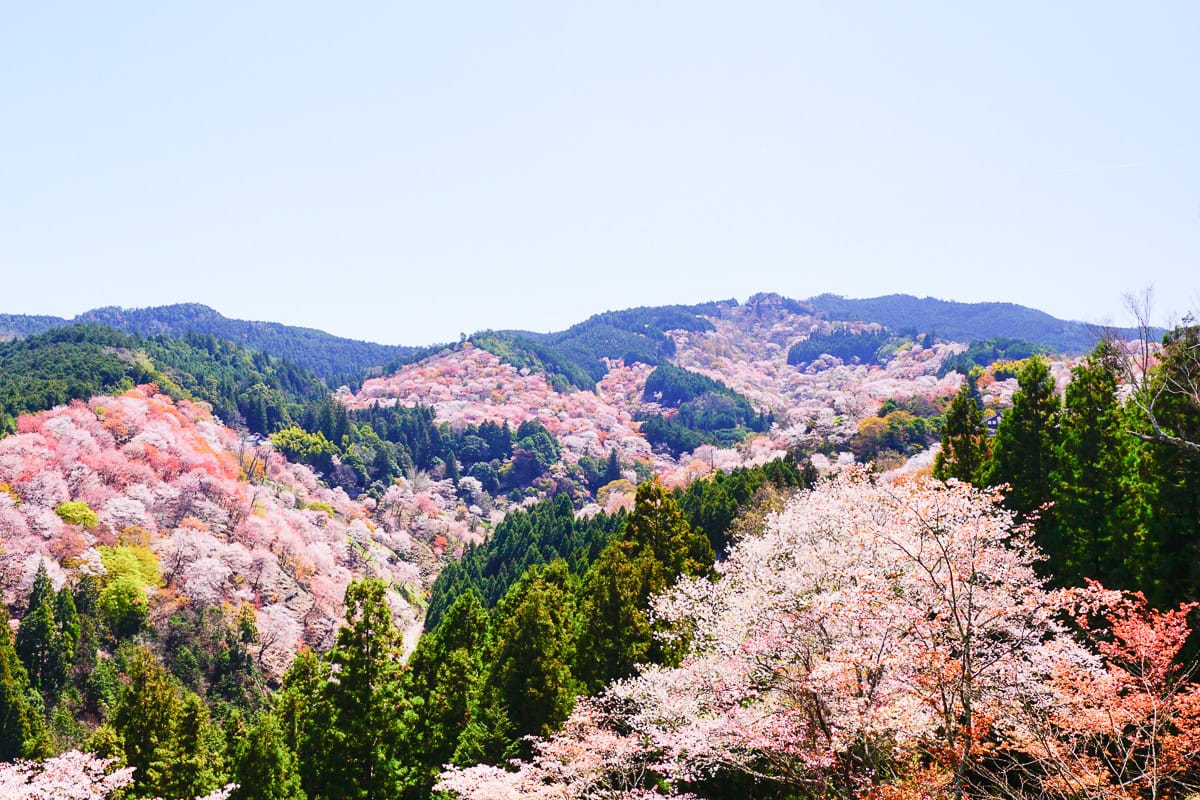
As you enter the Kami Senbon, the town starts to dissipate and becomes much quieter. Head to Hanayagura View Point for one of the most famous views over Yoshinoyama.
Finally, the Oku Senbon has many spots for hanami but only a few spots to overlook Yoshinoyama. Since the cherry blossoms bloom around a week later, you can visit here if you do not make it in time for the lower areas.
This area is a must-visit if you are traveling during this period and can be easily accessed by JR trains on the Kintetsu Yoshino Line. There is also a direct express train from Osaka Abenobashi Station to Yoshino Station, which takes around 90 minutes and costs 1170 yen.
Takada Senbon Sakura 高田千本桜
Blooming Period: Late March to Early April
Photo date: April 4th 2024
Directly translated as ‘the thousand cherry blossoms of Takada,’ this lesser-known spot is well worth a visit. While the seasonal trees are often enjoyed throughout the day, during hanami (cherry blossom viewing), you can also find many illuminations in the evening, known as yozakura.
IMG_2082
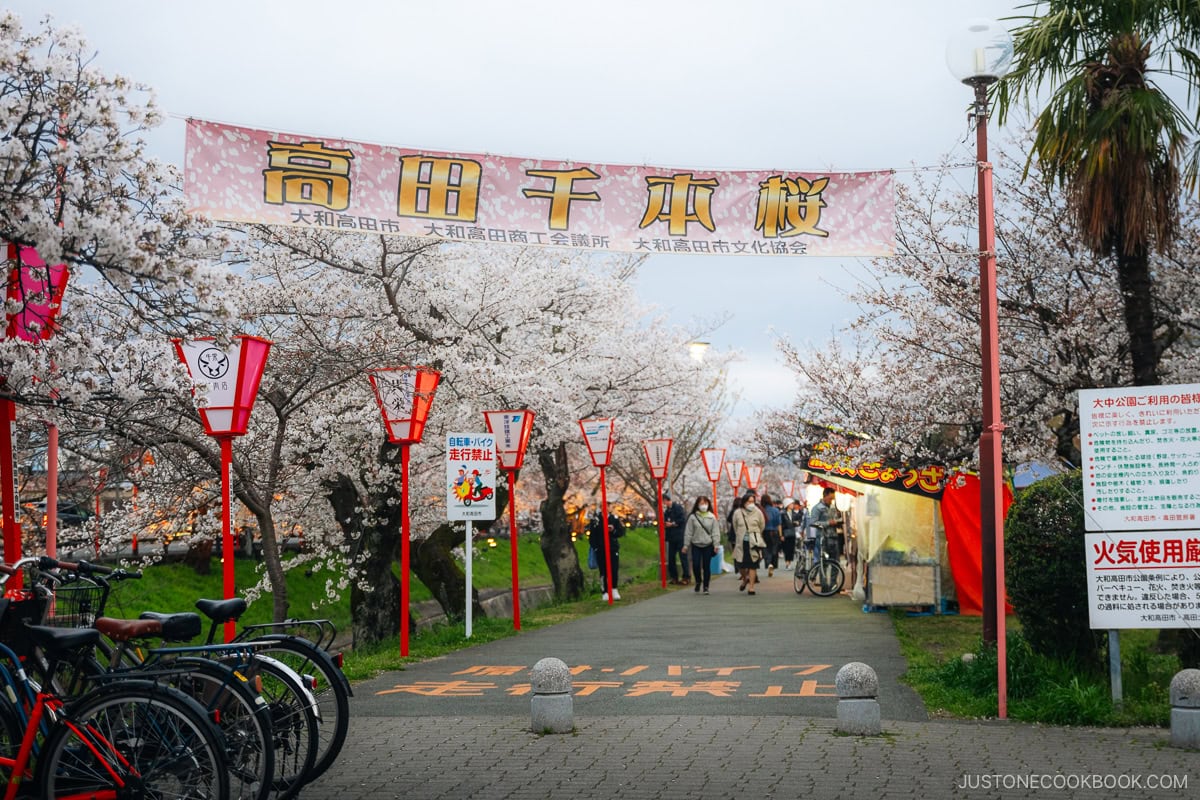
The cherry blossoms illuminate, creating a more magical and fantastical atmosphere. You can often enjoy some classic Japanese street food.
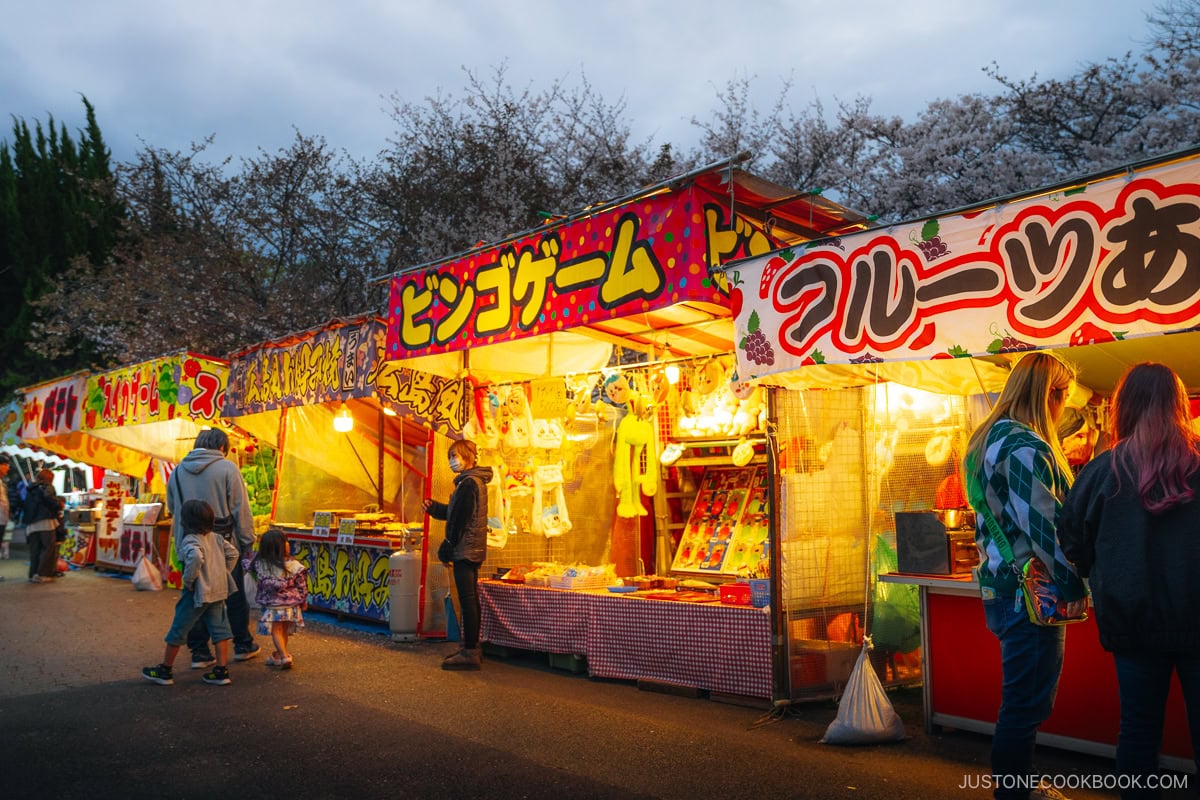



The Takada River and the surrounding streets are lined with endless rows of festival lanterns and cherry trees. Many families and couples were relaxing by the river, enjoying drinks and food from the various street stalls. I picked up some huge beef and pork skewers!

Many parks, temples, and shrines are open, especially for Yozakura, so keep an eye out! It’s a great way to experience a different side of the cherry blossoms.
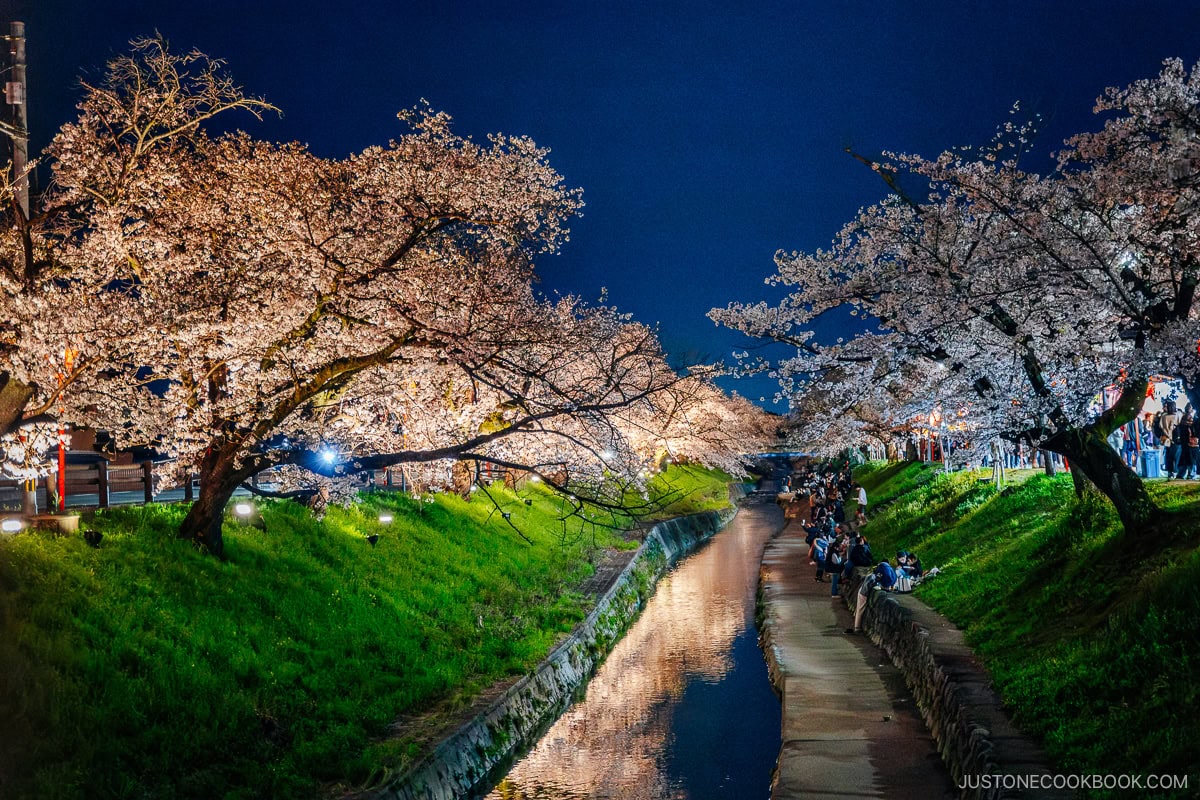
Nara is unmistakably home to some of the most iconic spring scenes and should be near the top of your itinerary if you visit during cherry blossom season! As I explored, the untouched beauty of southern Nara left a lasting impression, with fewer foreign visitors in sight. I truly hope you all have the opportunity to experience it for yourselves!
Discover more from reviewer4you.com
Subscribe to get the latest posts to your email.






